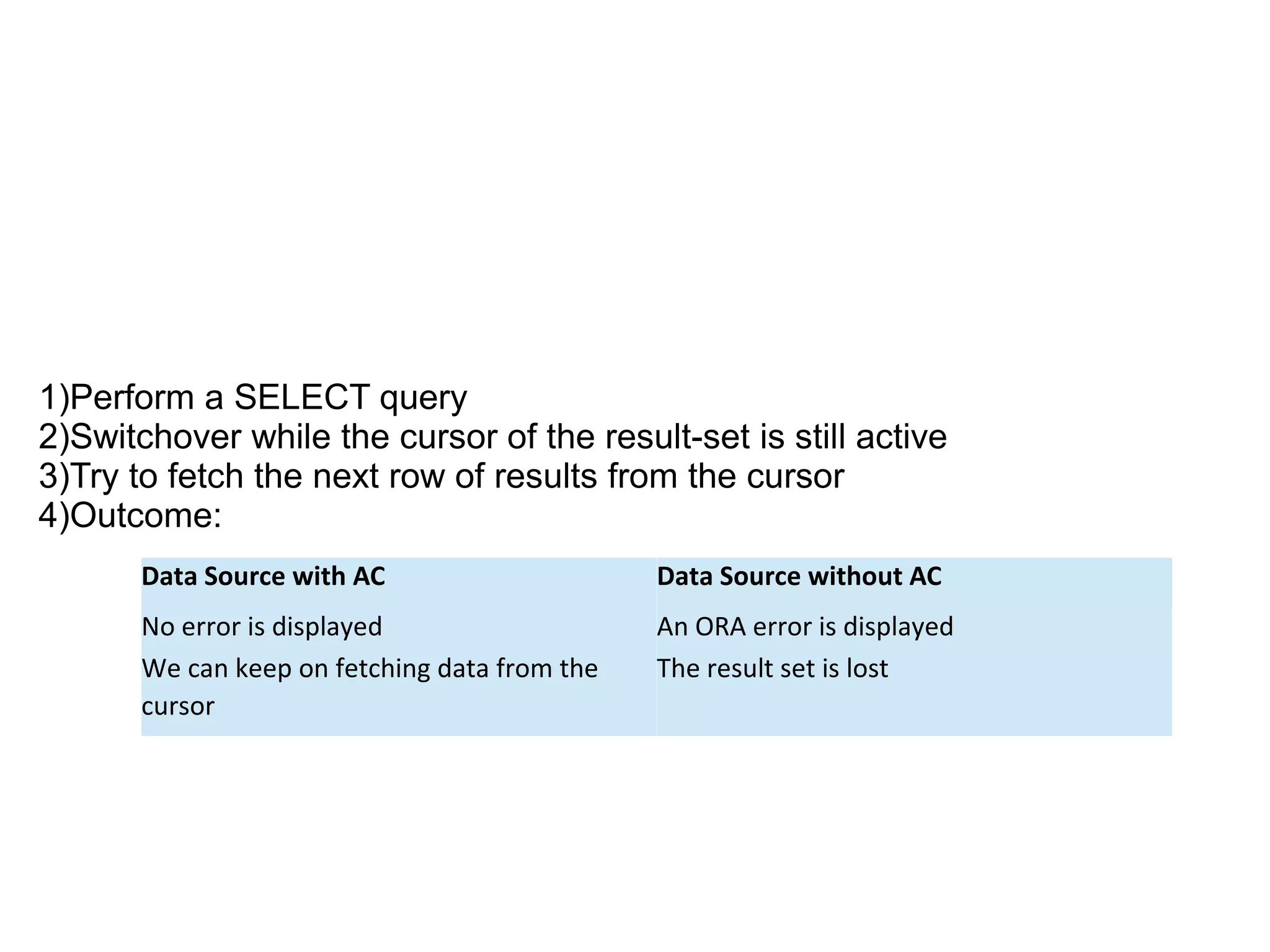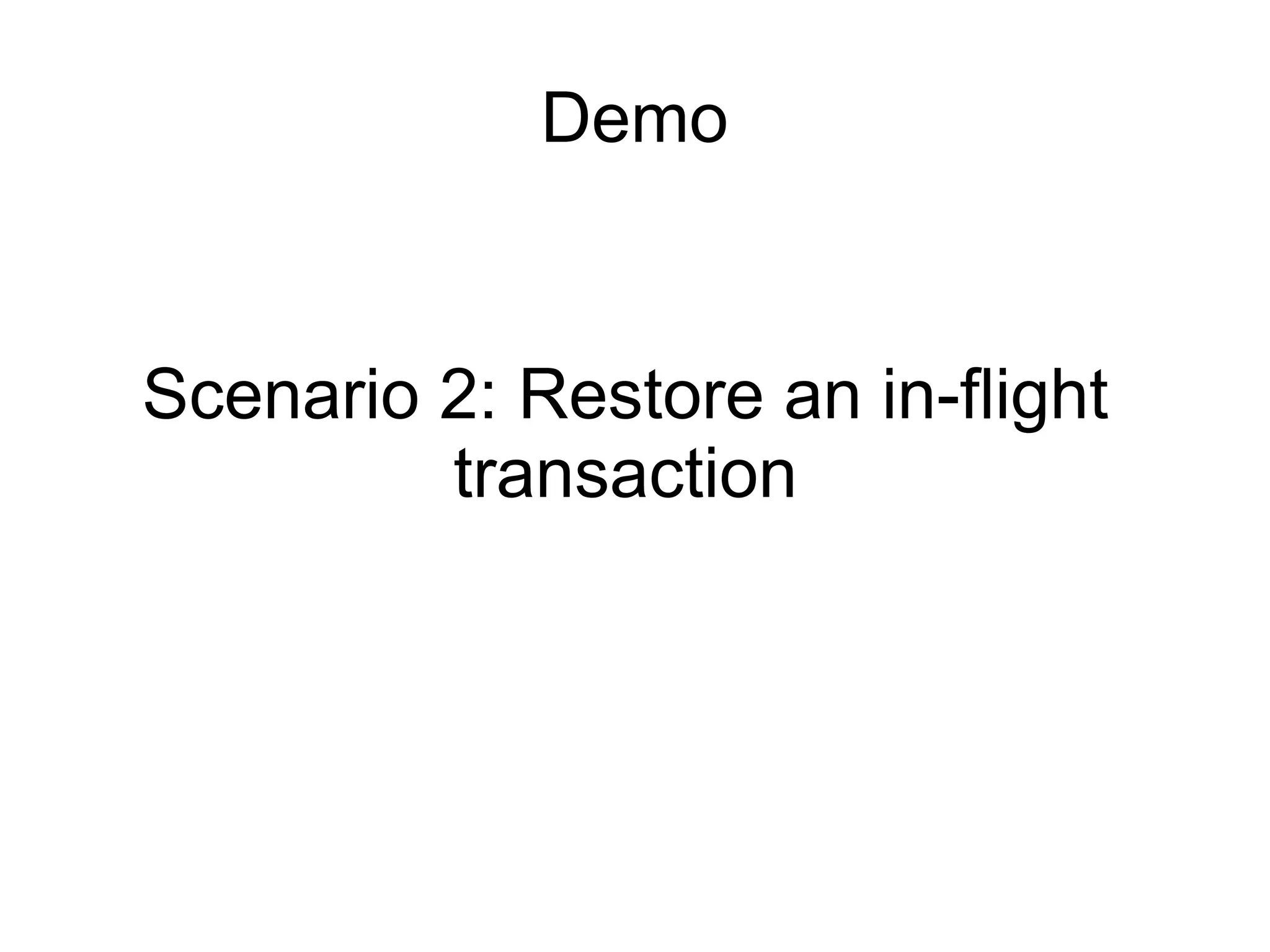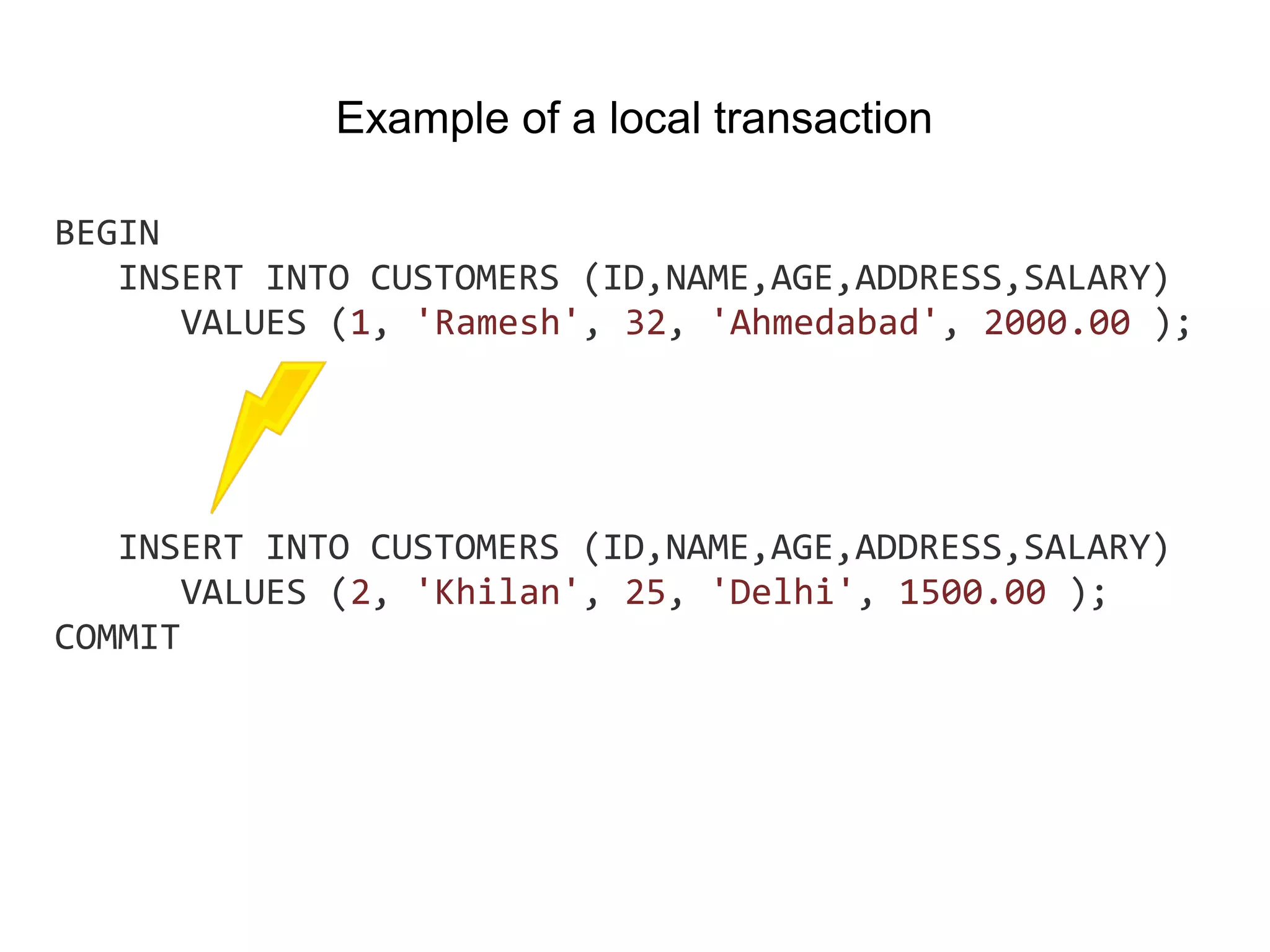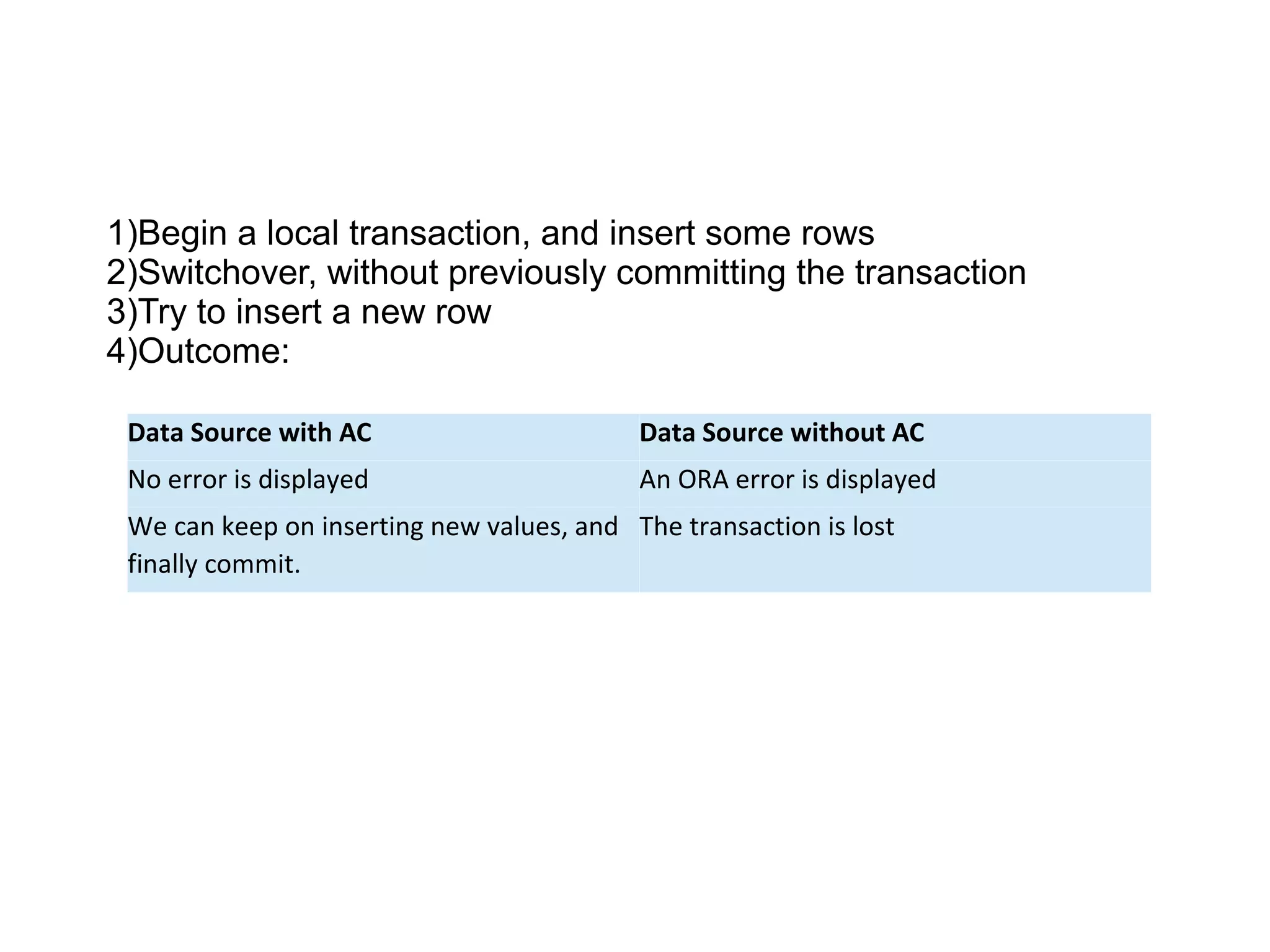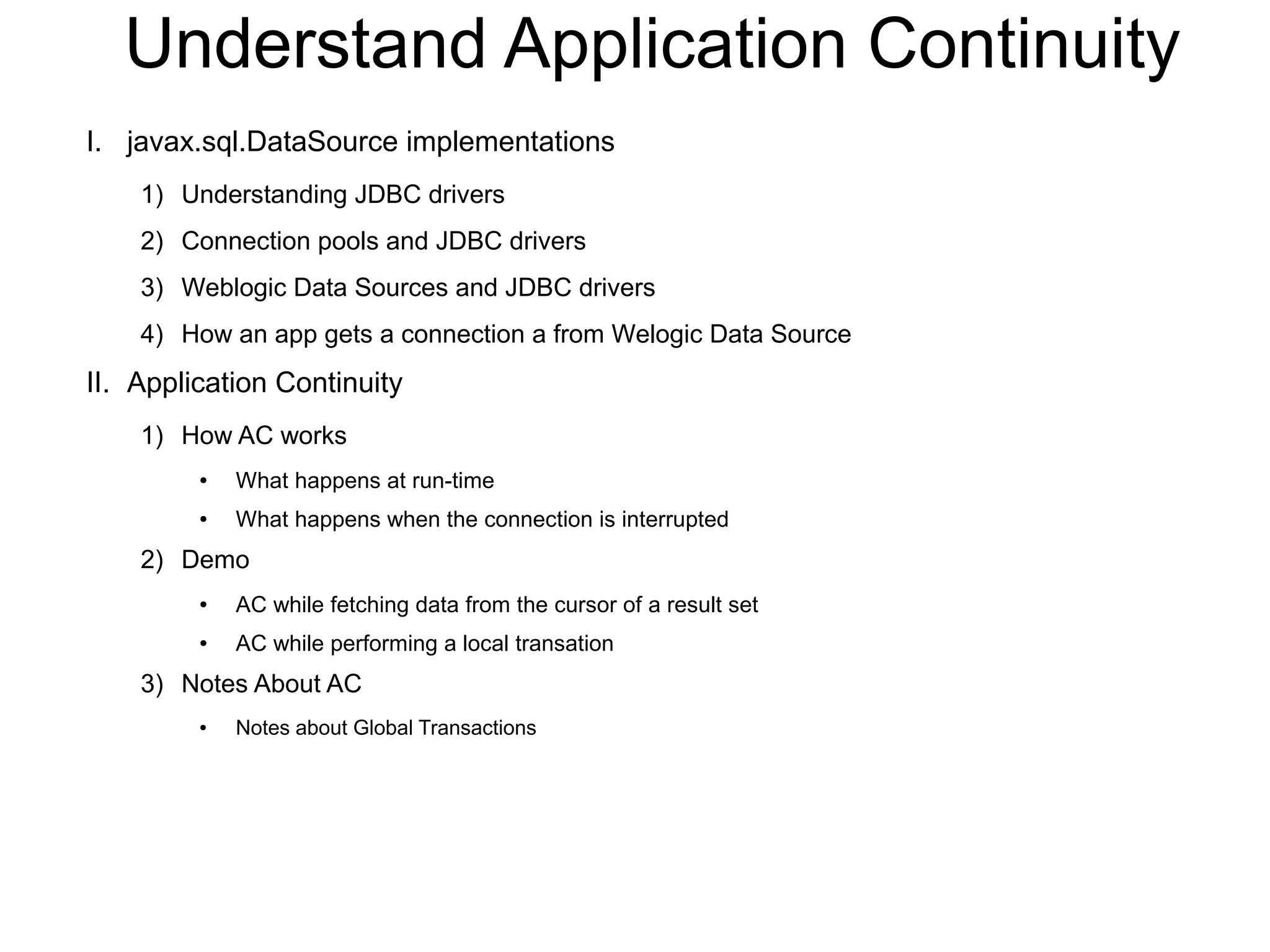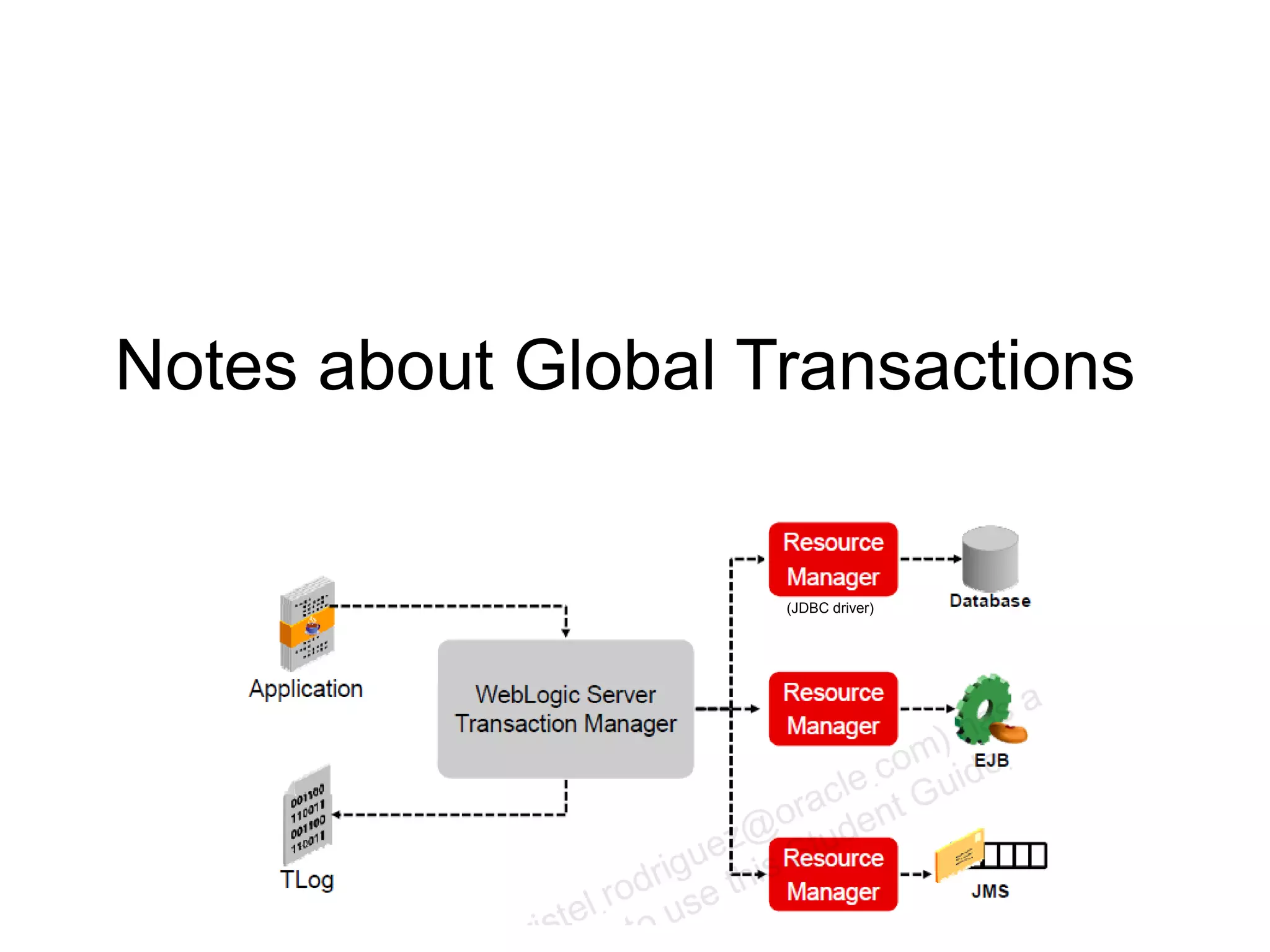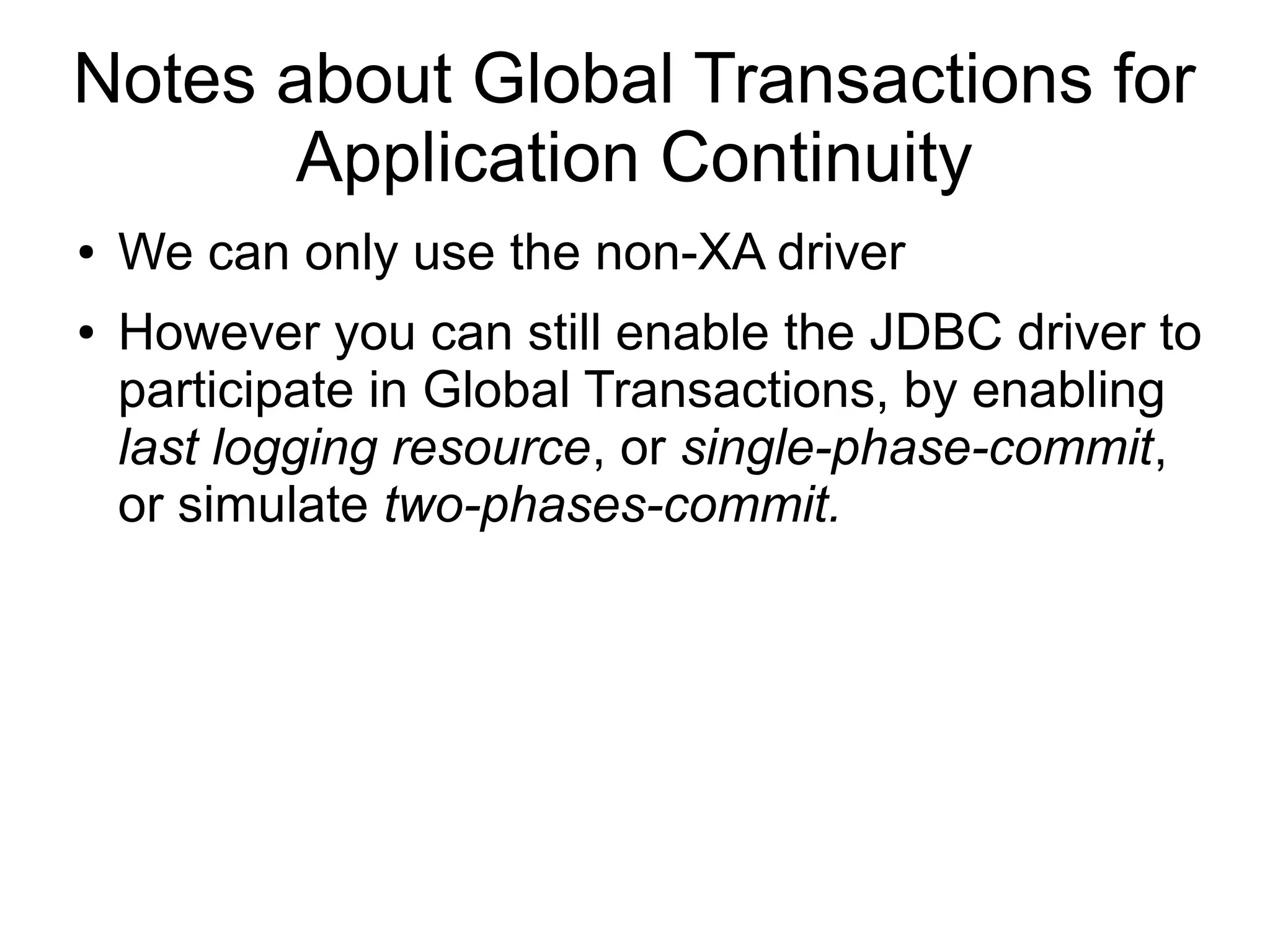The document consists of personal notes and drawings by Leopold Gault on application continuity, specifically regarding JDBC drivers, connection pools, and how applications manage connections, particularly in WebLogic. It discusses the mechanics of application continuity, the role of JDBC replay drivers, and how they allow for uninterrupted database transactions even after connection disruptions. The practical implementation of these concepts is illustrated with code examples and configurations for maintaining connection pools and request boundaries.
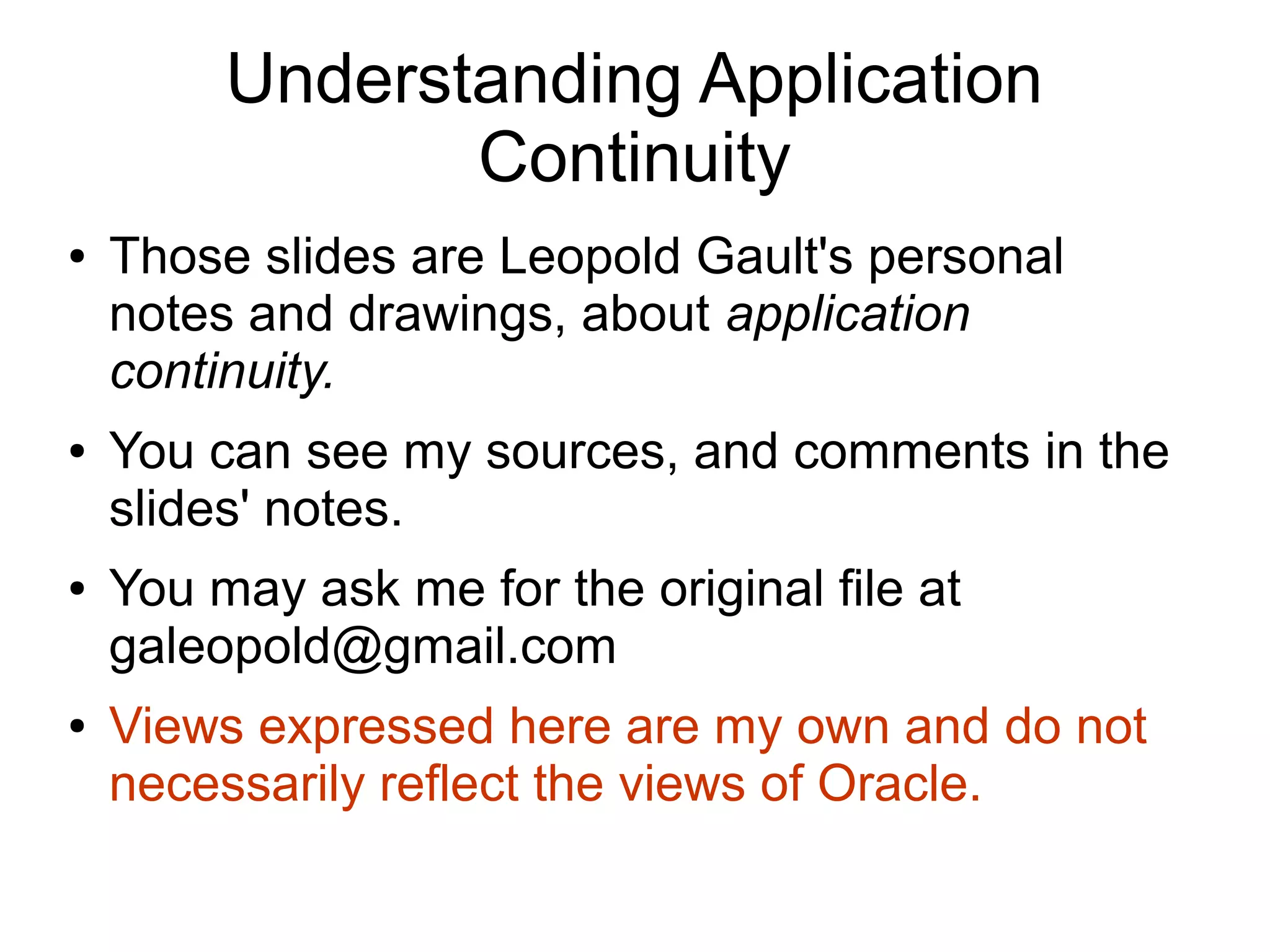
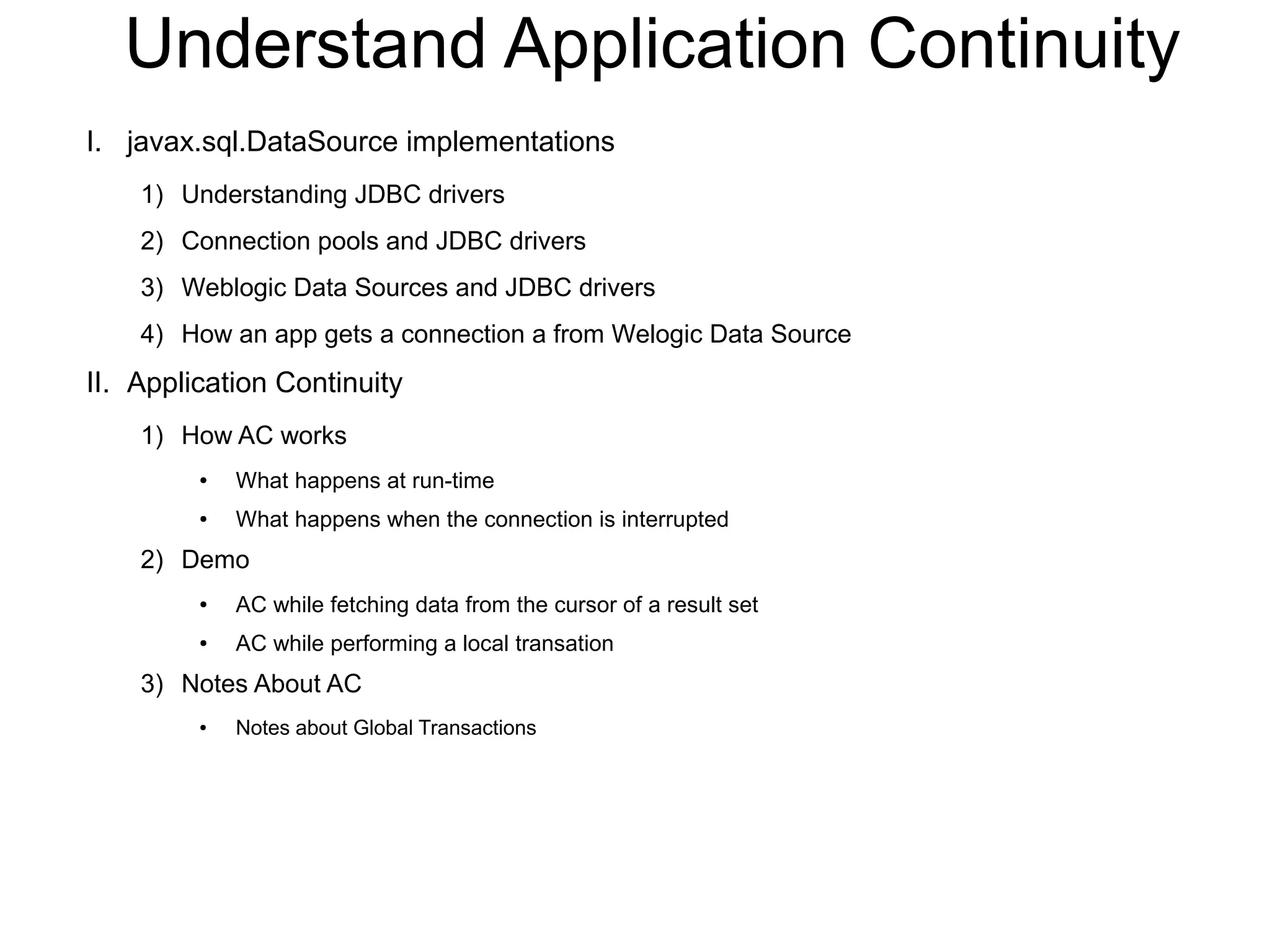
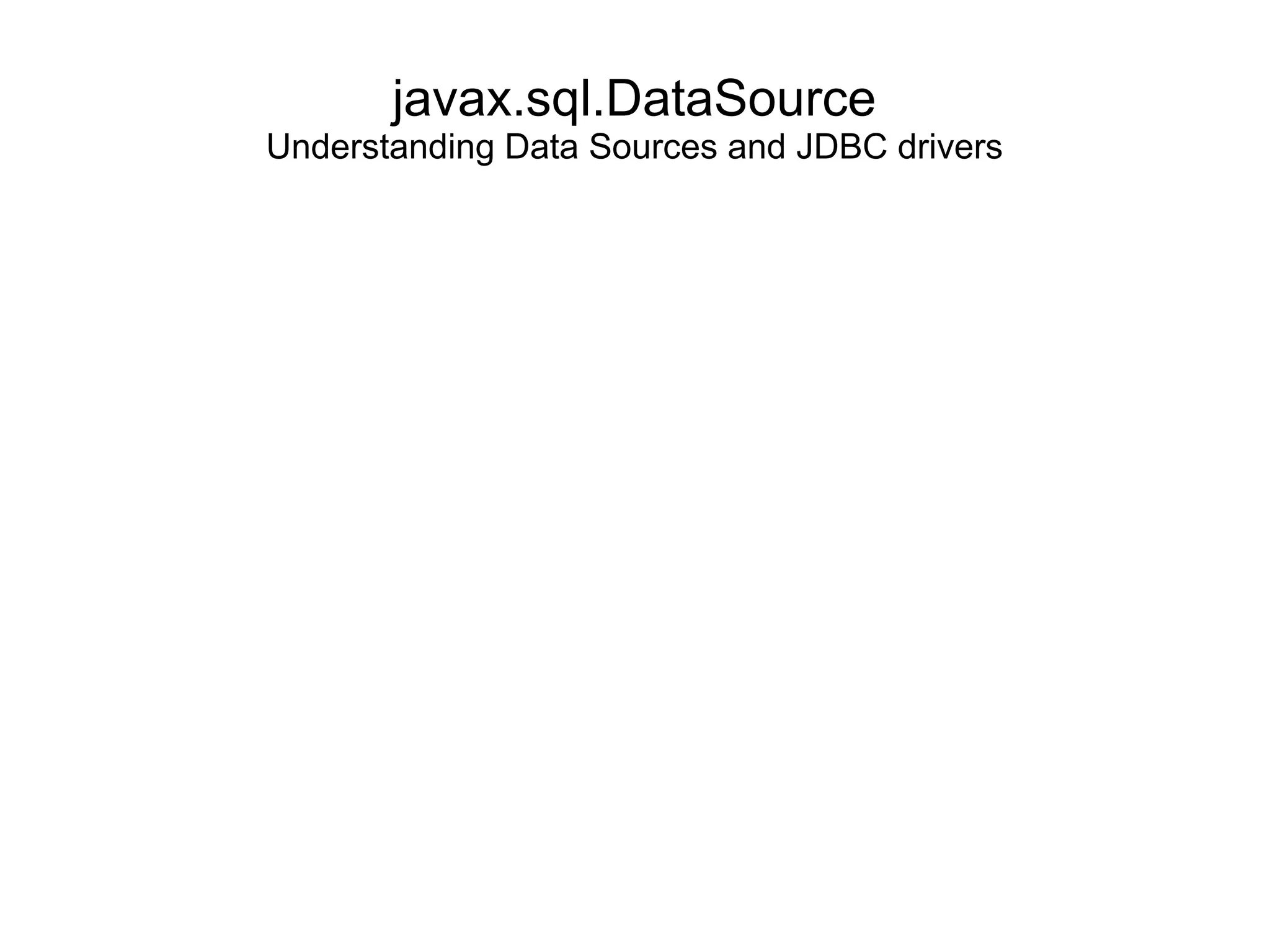
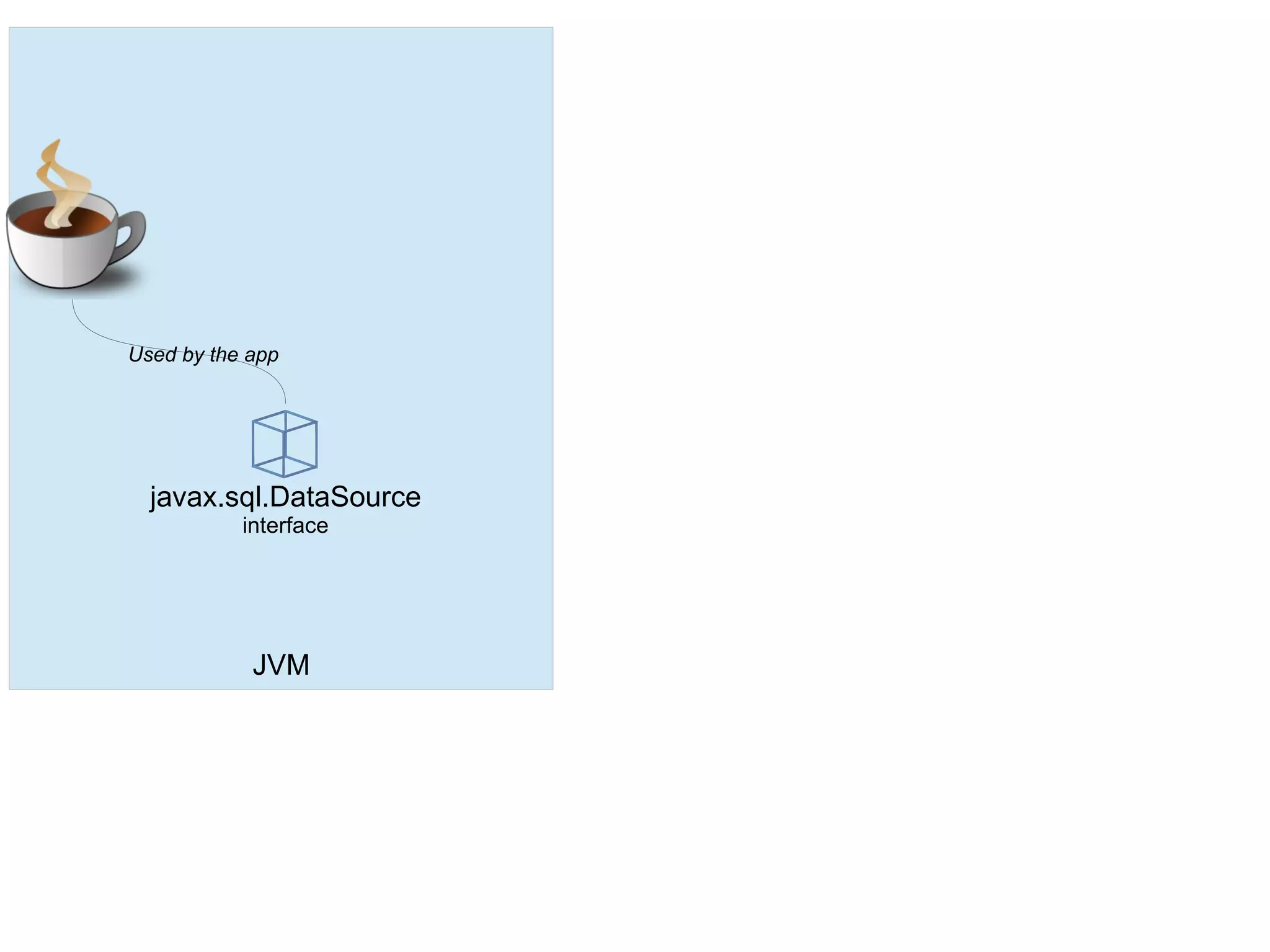
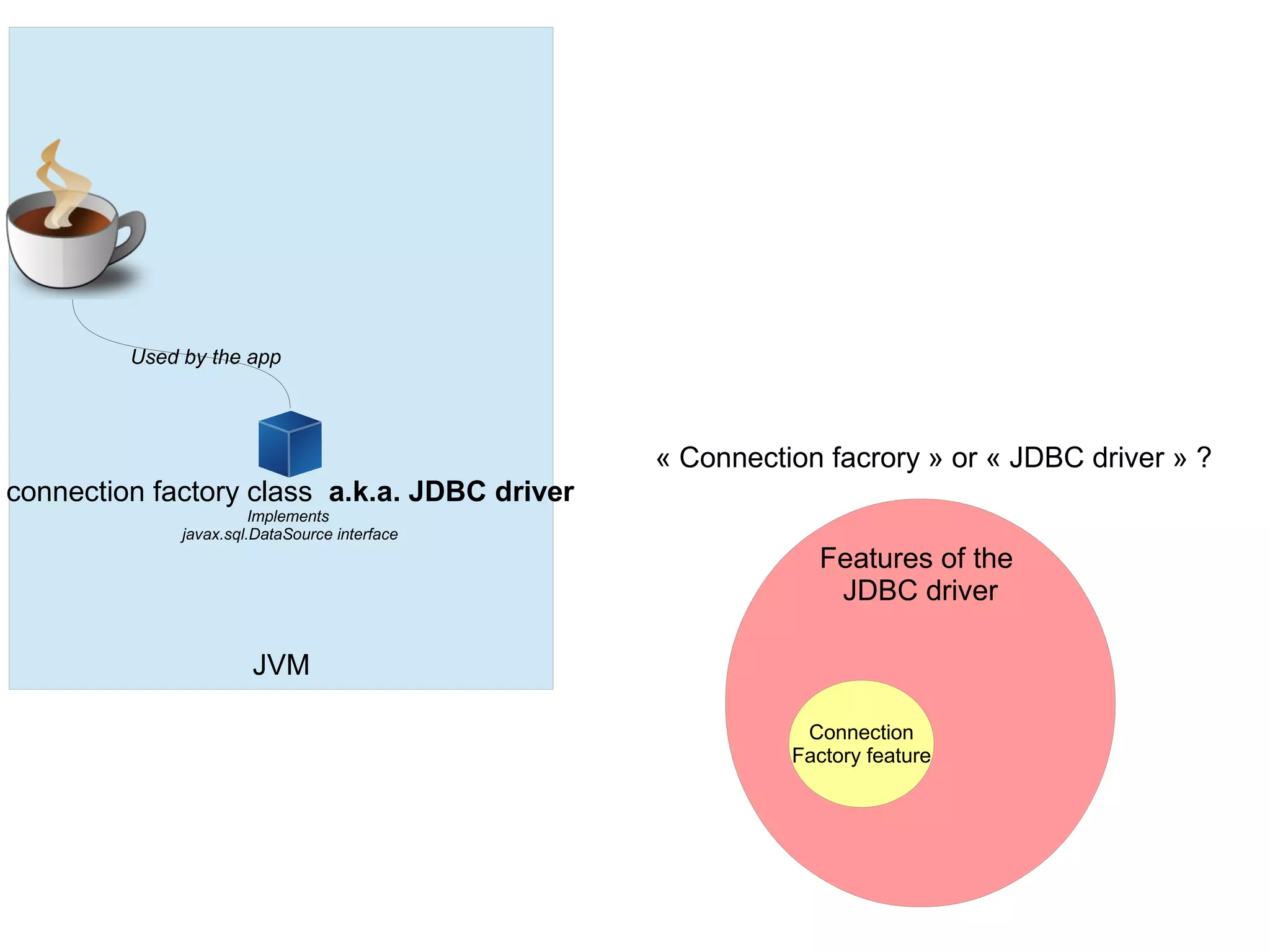
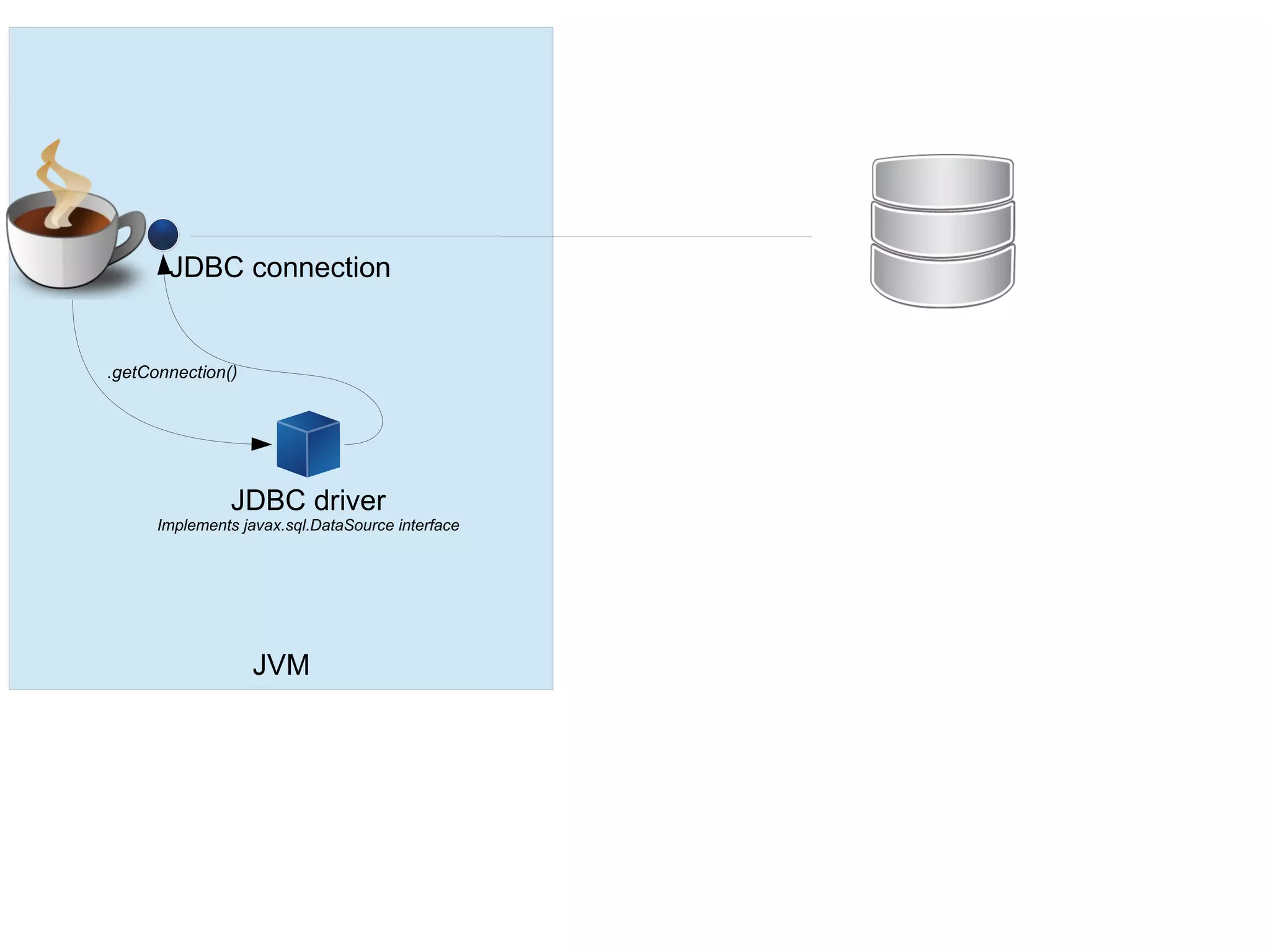
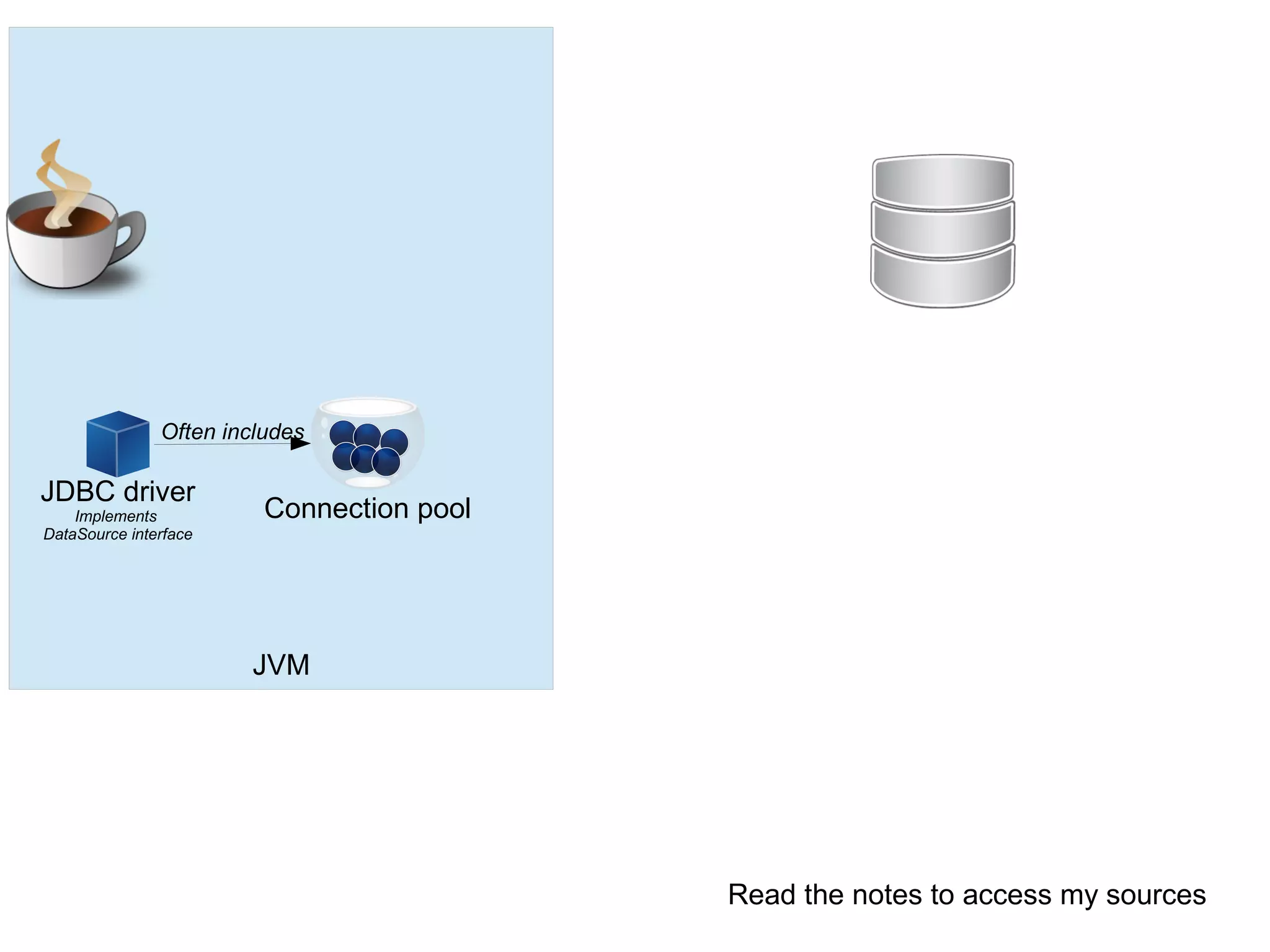
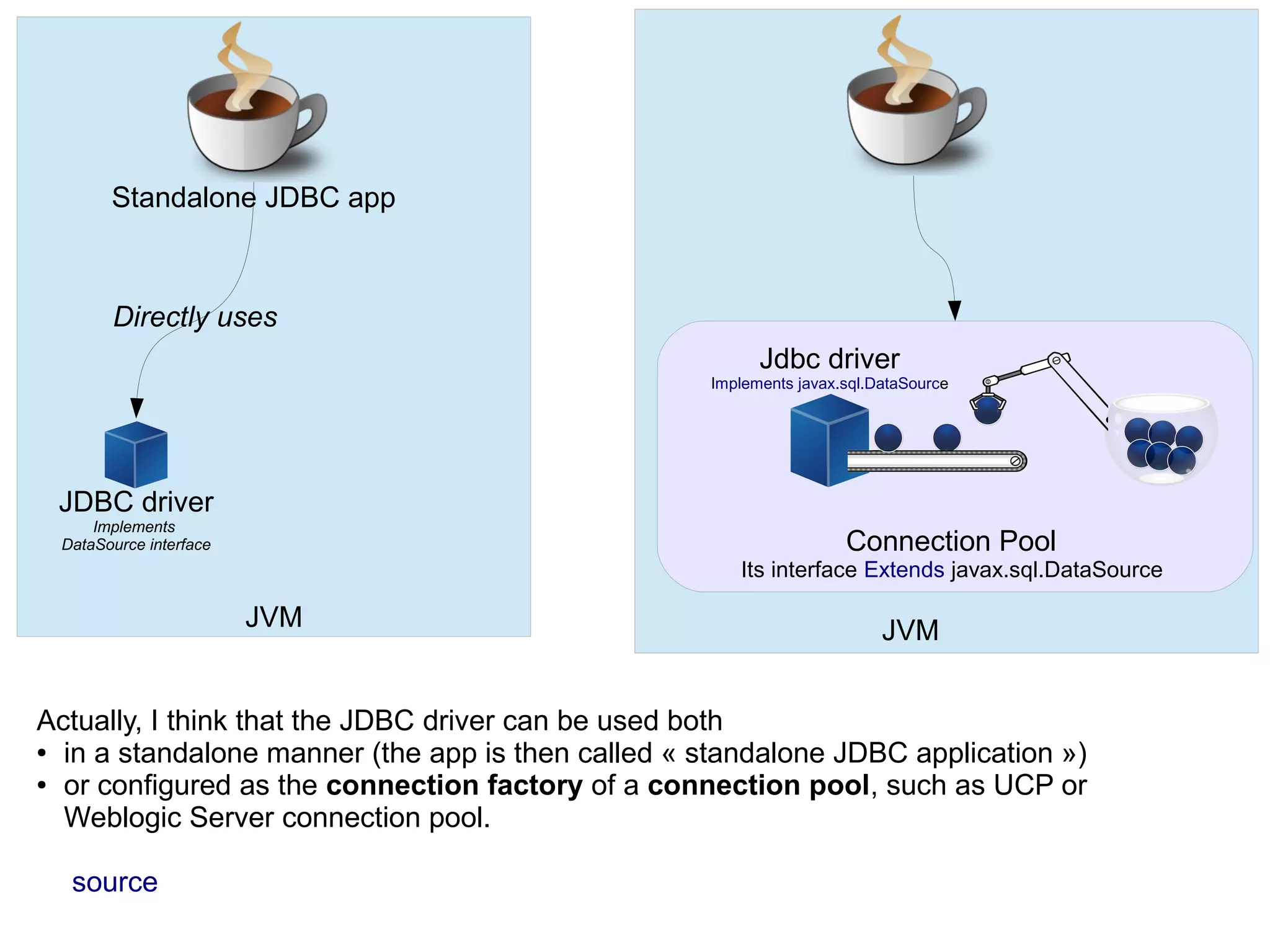
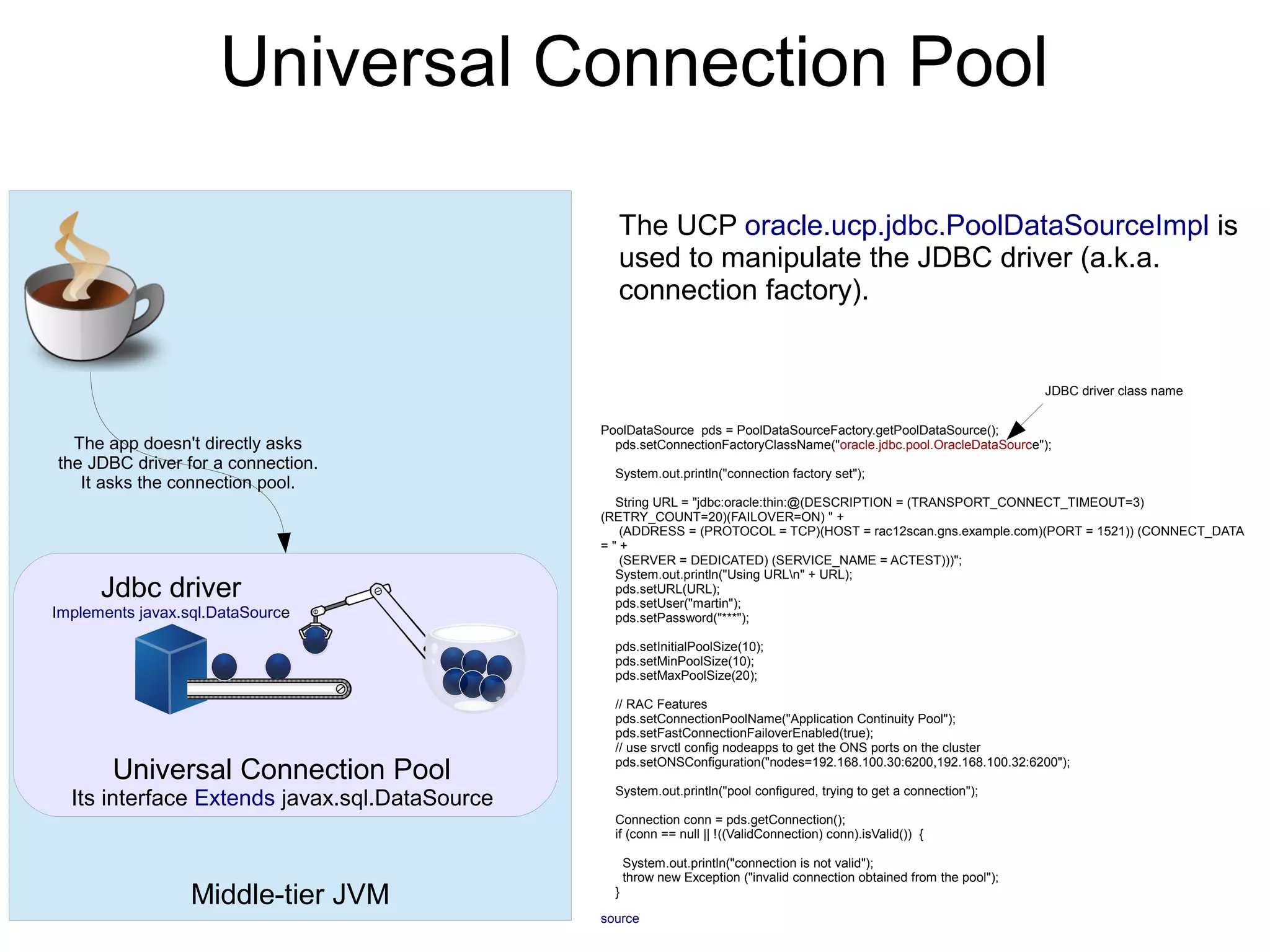
![Weblogic
Weblogic Data Source Connection Pool
Its interface extends DataSource interface[2]
I assume that the concept is the same
for Weblogic Data Source Connection
Pool: it is a class that manipulates the
JDBC driver in order to maintain a
connection pool.
Looked-up by the app thanks to its JNDI name
Weblogic Data Source
calling it « Weblogic Server Connection Pool » would make more sense! [1]
Jdbc driver
Implements javax.sql.DataSource](https://image.slidesharecdn.com/3notesleoforsharing-applicationcontitnuity-copy-180109155221/75/Application-Continuity-with-Oracle-DB-12c-10-2048.jpg)
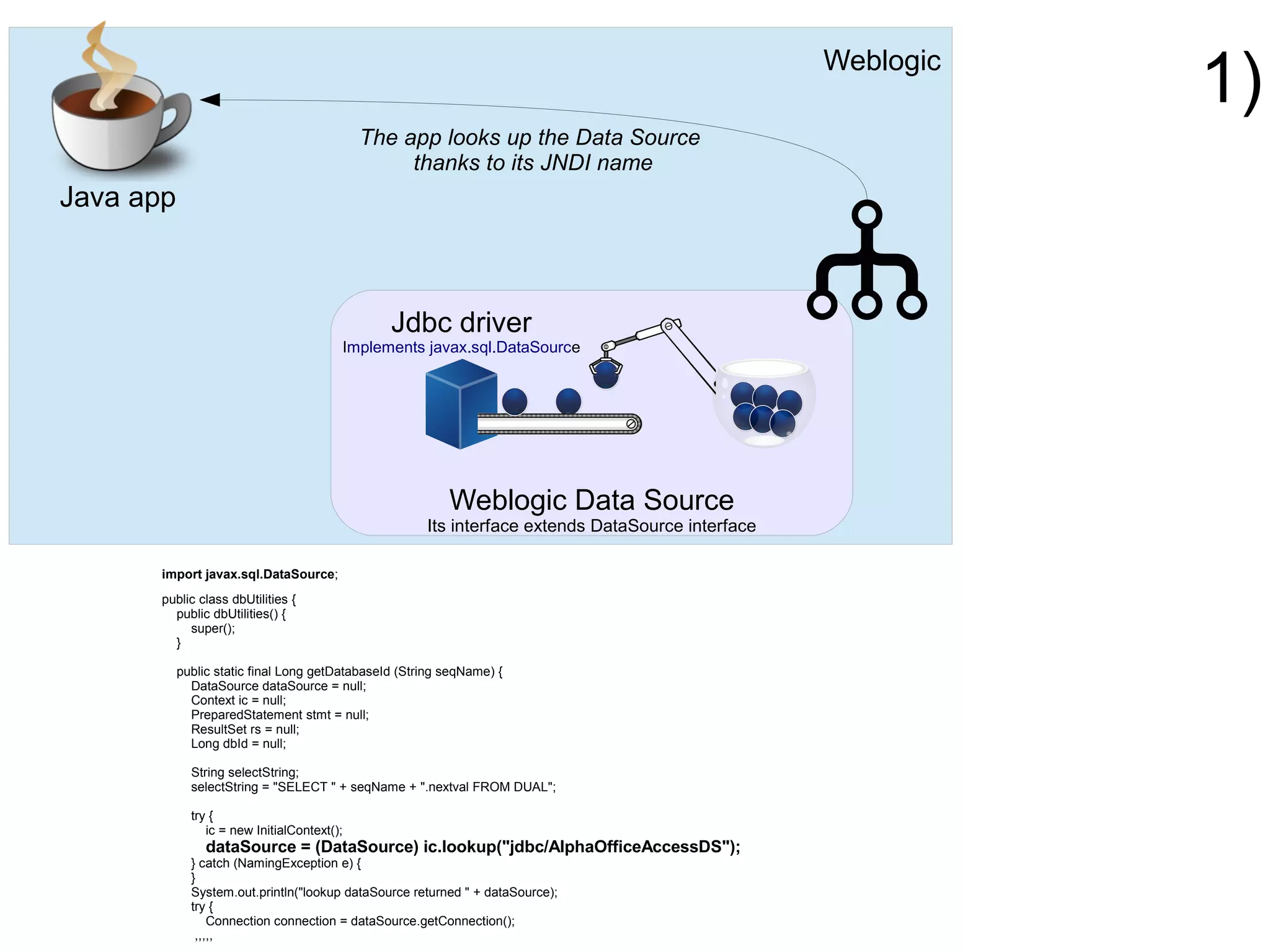
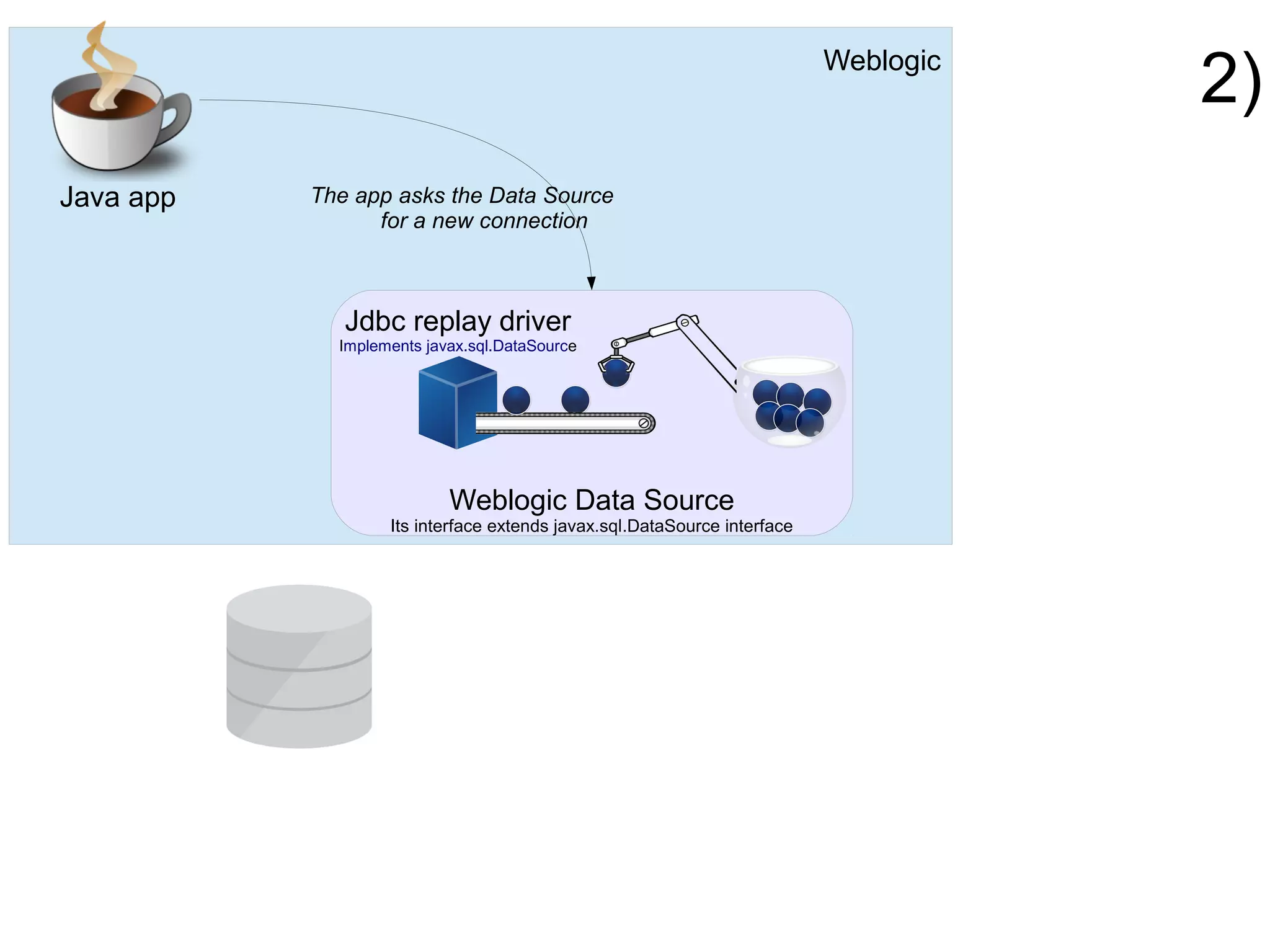
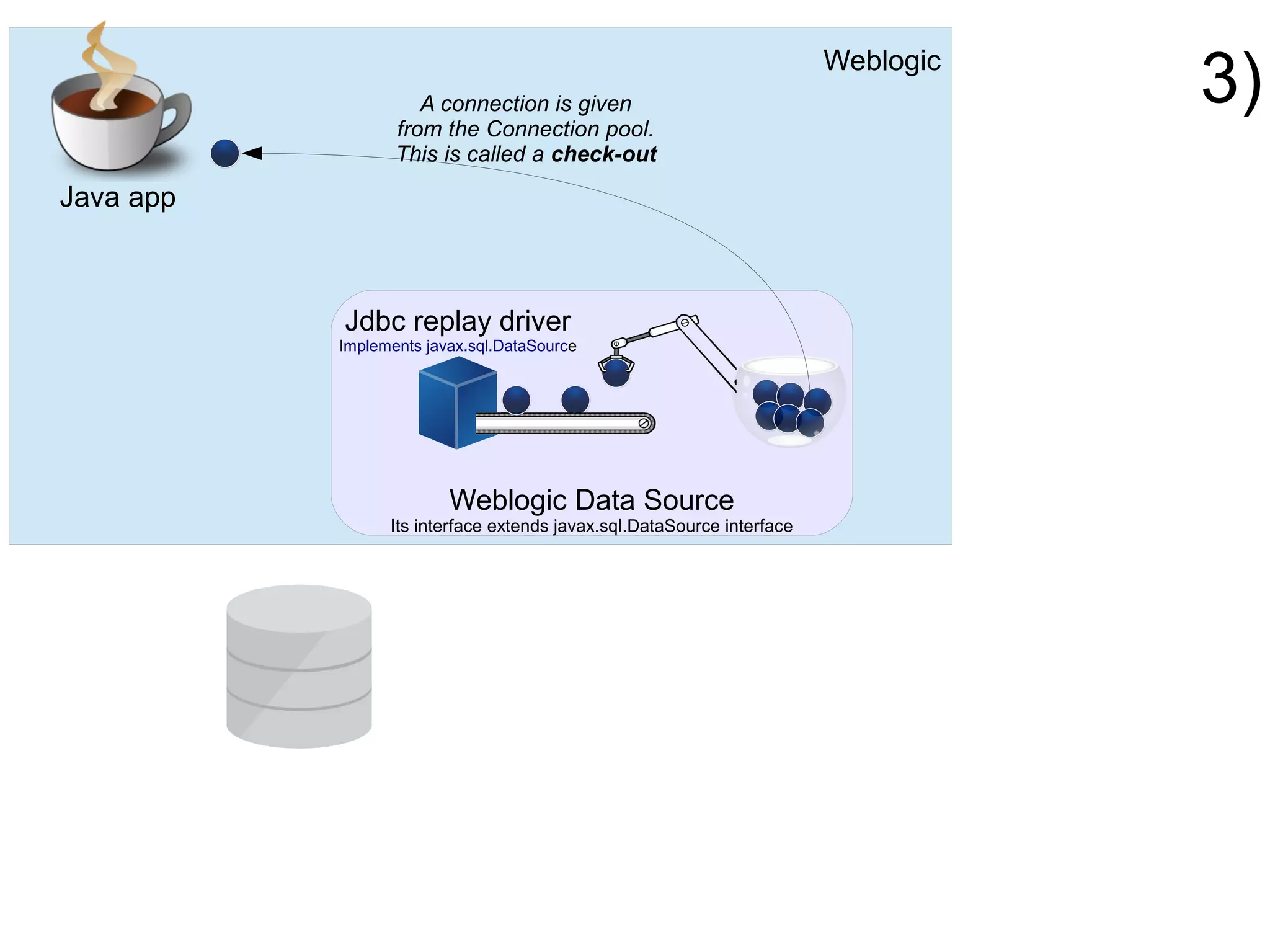
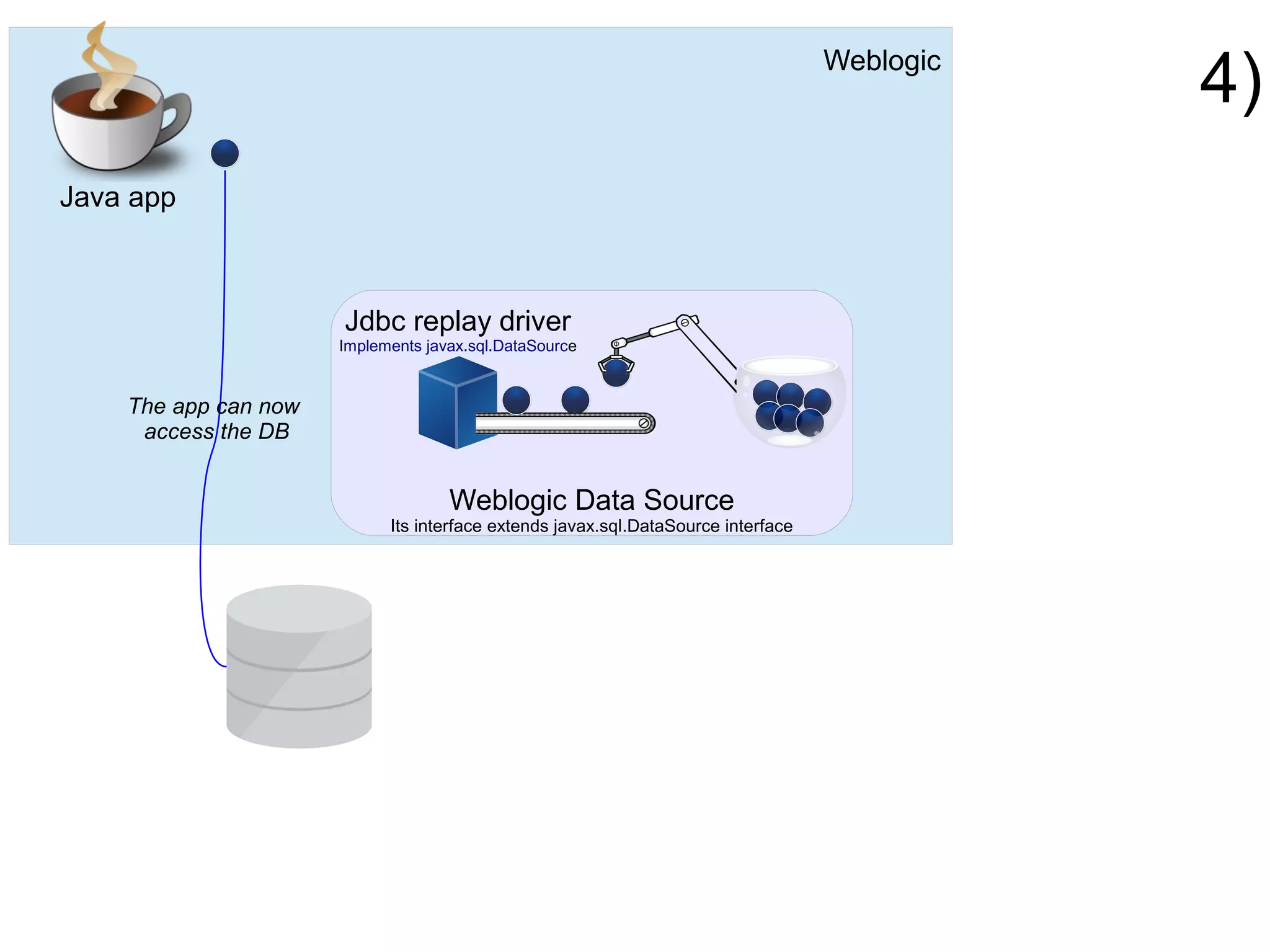
![Weblogic
Java app
Everything (all the
database calls)
that happens on
the connection
object between
the check-out and
the check-in is
called a request
[1]
Weblogic Data Source
Its interface extends javax.sql.DataSource interface
Jdbc replay driver
Implements javax.sql.DataSource
Check-out
Check-in](https://image.slidesharecdn.com/3notesleoforsharing-applicationcontitnuity-copy-180109155221/75/Application-Continuity-with-Oracle-DB-12c-15-2048.jpg)
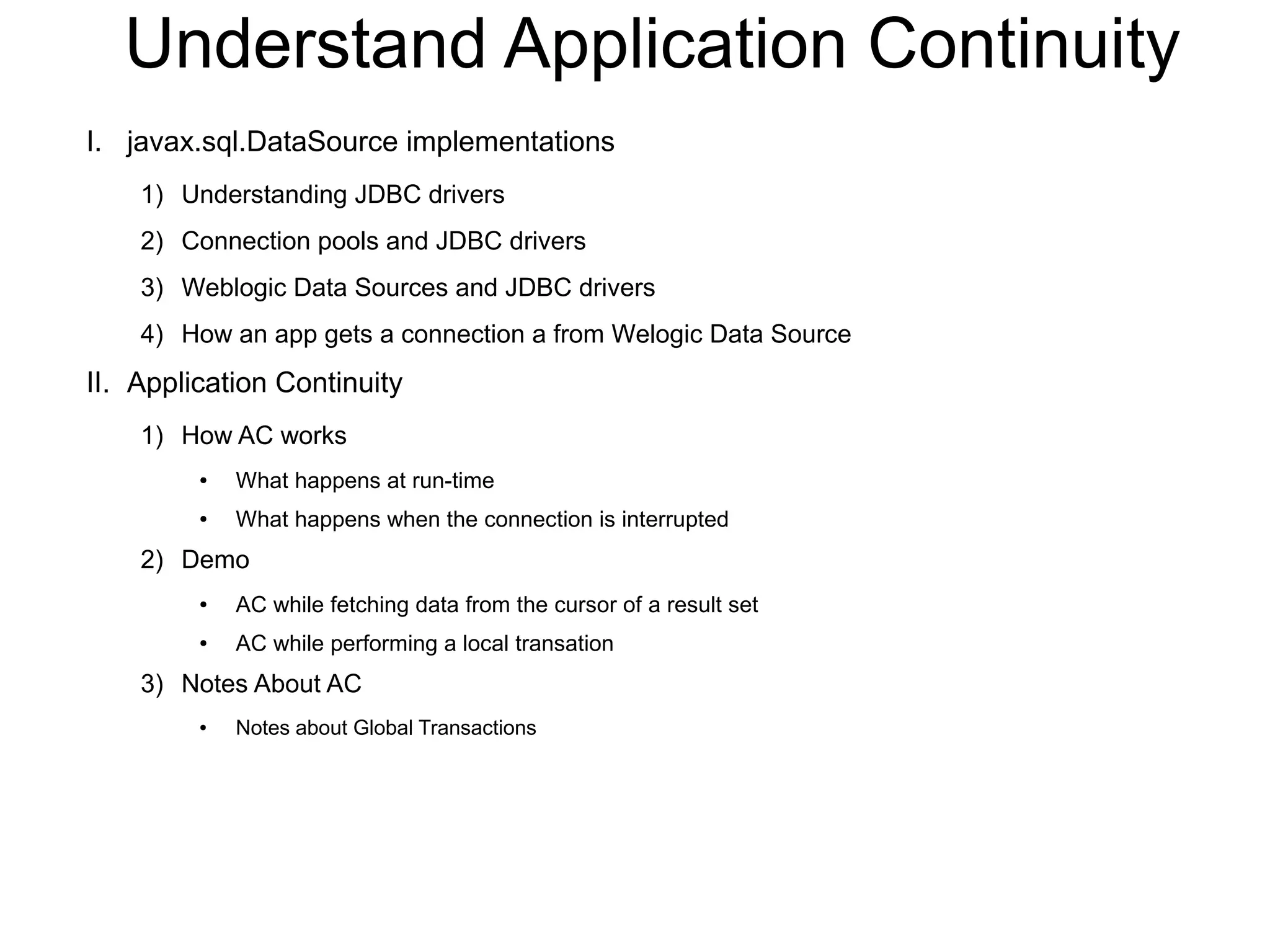
![2] Application Continuity
How to use the JDBC replay driver](https://image.slidesharecdn.com/3notesleoforsharing-applicationcontitnuity-copy-180109155221/75/Application-Continuity-with-Oracle-DB-12c-17-2048.jpg)
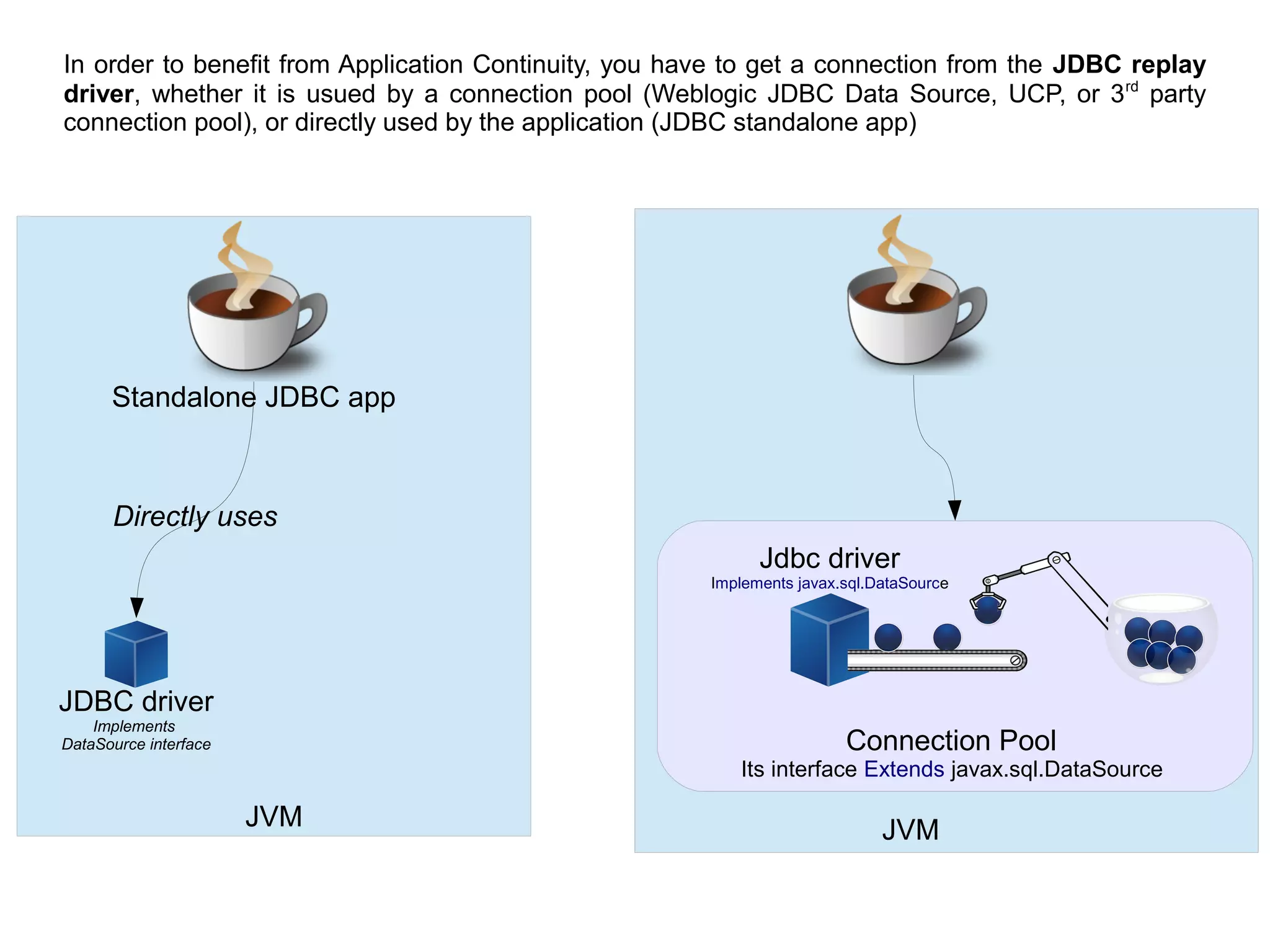
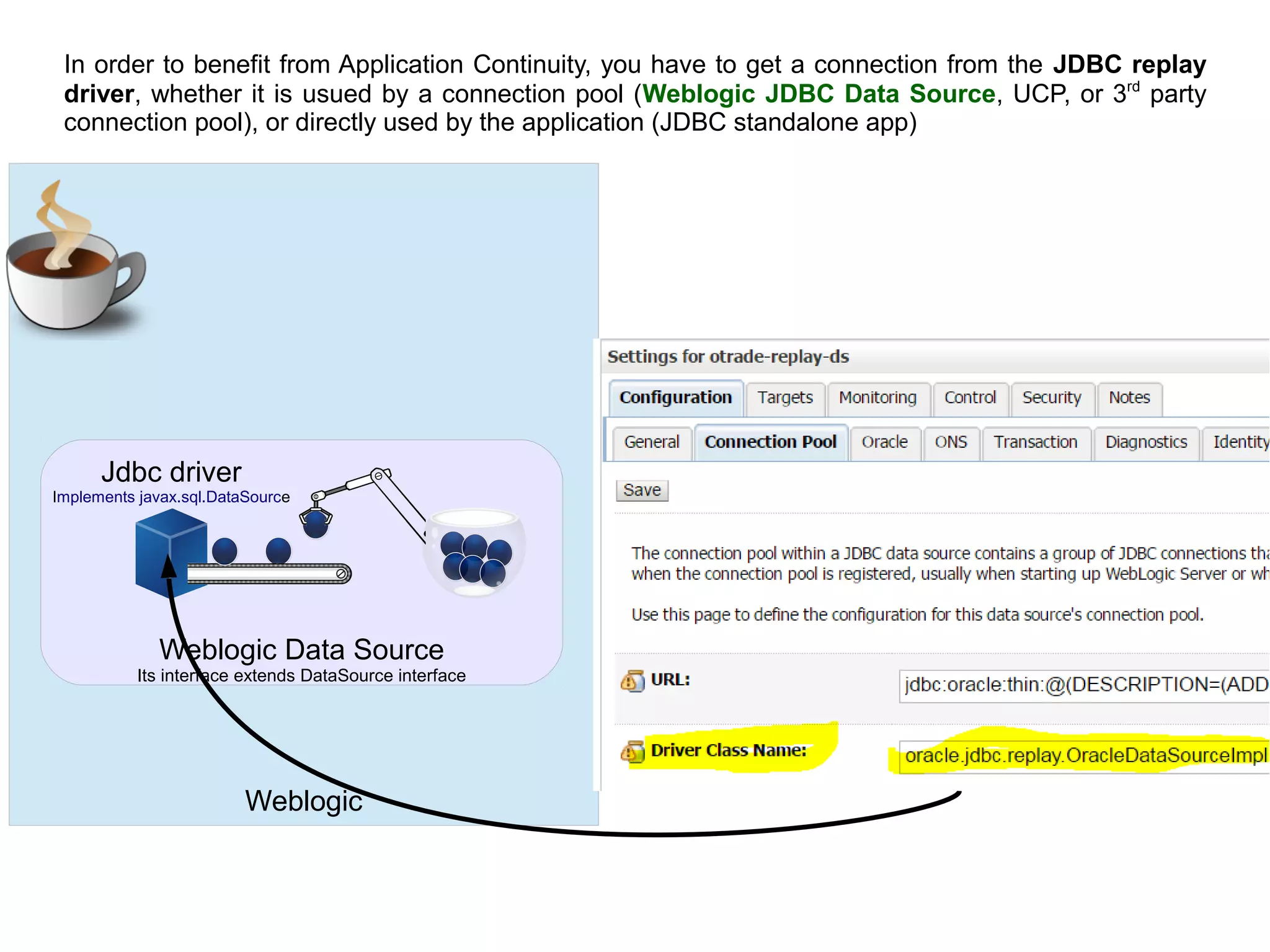
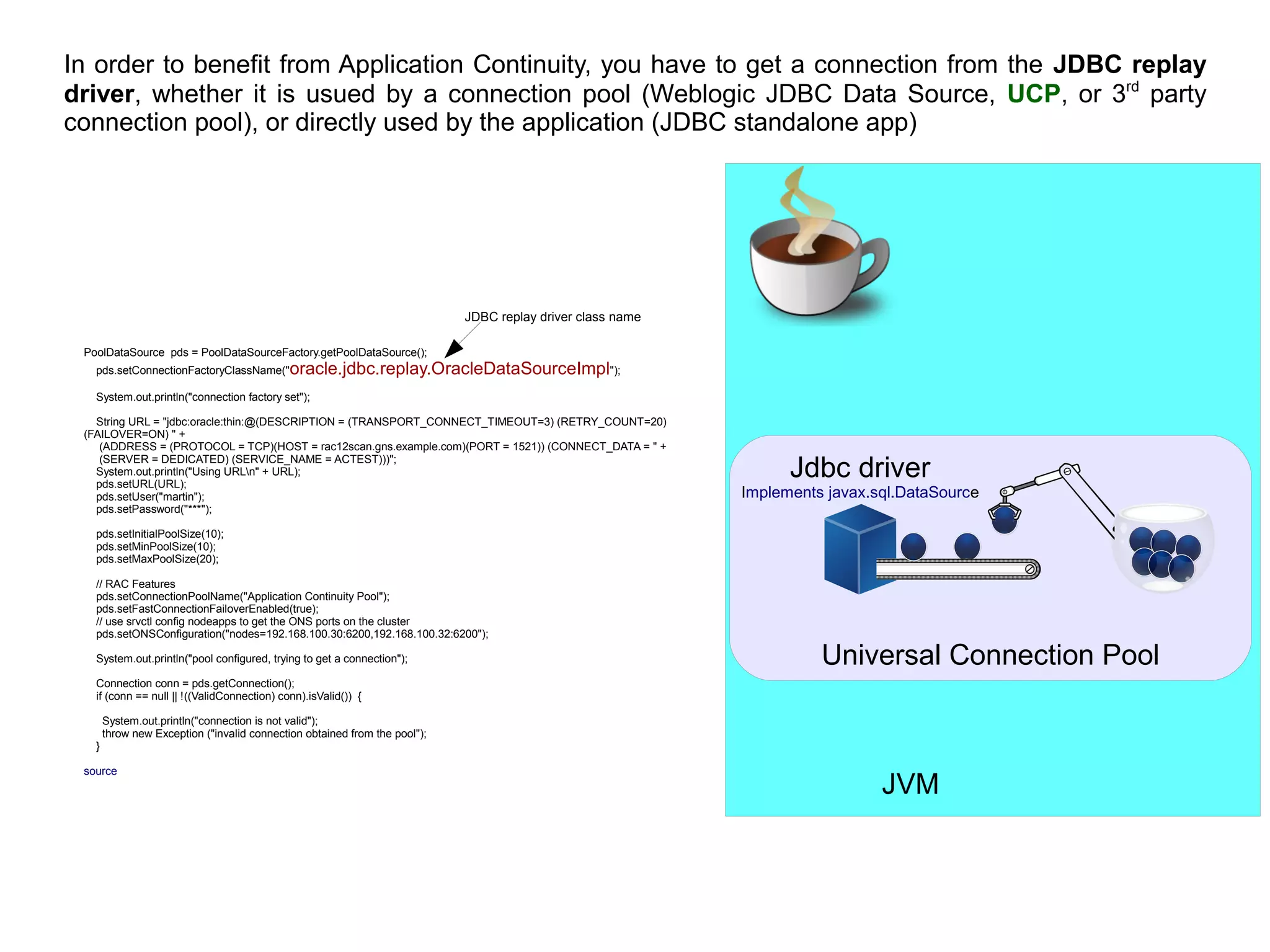
![Note that if you use connections that do not come from an Oracle connection pool (Weblogic Data Source or UCP,
etc.), but instead come from a third party connection pool, you have to add beginRequest and endRequest APIs to the
application's own connection pool to identify request boundaries. [1]
import java.sql.Connection;
import javax.sql.PooledConnection;
import oracle.jdbc.OracleConnection;
import oracle.jdbc.replay.OracleDataSourceFactory;
import oracle.jdbc.replay.OracleDataSource;
import oracle.jdbc.replay.OracleConnectionPoolDataSource;
...
{
......
OracleDataSource rds = OracleDataSourceFactory.getOracleDataSource();
rds.setUser(user);
rds.setPassword(passwd);
rds.setURL(url);
...... // Other data source configuration like callback, timeouts, etc.
Connection conn = rds.getConnection();
((OracleConnection) conn).beginRequest(); // Explicit request begin
...... // JDBC calls protected by Application Continuity
((OracleConnection) conn).endRequest(); // Explicit request end
conn.close();
OracleConnectionPoolDataSource rcpds = OracleDataSourceFactory.getOracleConnectionPoolDataSource();
rcpds.setUser(user);
rcpds.setPassword(passwd);
rcpds.setURL(url);
...... // other data source configuration like callback, timeouts, and so on
PooledConnection pc = rcpds.getPooledConnection();
Connection conn2 = pc.getConnection(); // Implicit request begin
...... // JDBC calls protected by Application Continuity
conn2.close(); // Implicit request end
source
JDBC replay driver interface name
Here we use the
replay-driver directly
so we have to add
beginRequest()
Here we use an Oracle
connection pool, so no
need to add
beginRequest()](https://image.slidesharecdn.com/3notesleoforsharing-applicationcontitnuity-copy-180109155221/75/Application-Continuity-with-Oracle-DB-12c-21-2048.jpg)
![JVM
JDBC replay driver
Implements
DataSource interface
Standalone jdbc app
directly uses
Note that if you use connections that do not come from an Oracle connection pool (Weblogic Data Source or UCP,
etc.), but instead come from a third party connection pool, you have to add beginRequest and endRequest APIs to the
application's own connection pool to identify request boundaries. [1]
import java.sql.Connection;
import javax.sql.PooledConnection;
import oracle.jdbc.OracleConnection;
import oracle.jdbc.replay.OracleDataSourceFactory;
import oracle.jdbc.replay.OracleDataSource;
import oracle.jdbc.replay.OracleConnectionPoolDataSource;
...
{
......
OracleDataSource rds = OracleDataSourceFactory.getOracleDataSource();
rds.setUser(user);
rds.setPassword(passwd);
rds.setURL(url);
...... // Other data source configuration like callback, timeouts, etc.
Connection conn = rds.getConnection();
((OracleConnection) conn).beginRequest(); // Explicit request begin
...... // JDBC calls protected by Application Continuity
((OracleConnection) conn).endRequest(); // Explicit request end
conn.close();
OracleConnectionPoolDataSource rcpds = OracleDataSourceFactory.getOracleConnectionPoolDataSource();
rcpds.setUser(user);
rcpds.setPassword(passwd);
rcpds.setURL(url);
...... // other data source configuration like callback, timeouts, and so on
PooledConnection pc = rcpds.getPooledConnection();
Connection conn2 = pc.getConnection(); // Implicit request begin
...... // JDBC calls protected by Application Continuity
conn2.close(); // Implicit request end
source
JDBC replay driver interface name
Note that if you use the jdbc replay driver in a stand alone
manner, you also have to add beginRequest/endRequest [2]
Here we use the
replay-driver directly
so we have to add
beginRequest()
Here we use an Oracle
connection pool, so no
need to add
beginRequest()](https://image.slidesharecdn.com/3notesleoforsharing-applicationcontitnuity-copy-180109155221/75/Application-Continuity-with-Oracle-DB-12c-22-2048.jpg)
![What happens with the replay driver and DB 12c
at runtime
[source]
2] Application Continuity](https://image.slidesharecdn.com/3notesleoforsharing-applicationcontitnuity-copy-180109155221/75/Application-Continuity-with-Oracle-DB-12c-23-2048.jpg)
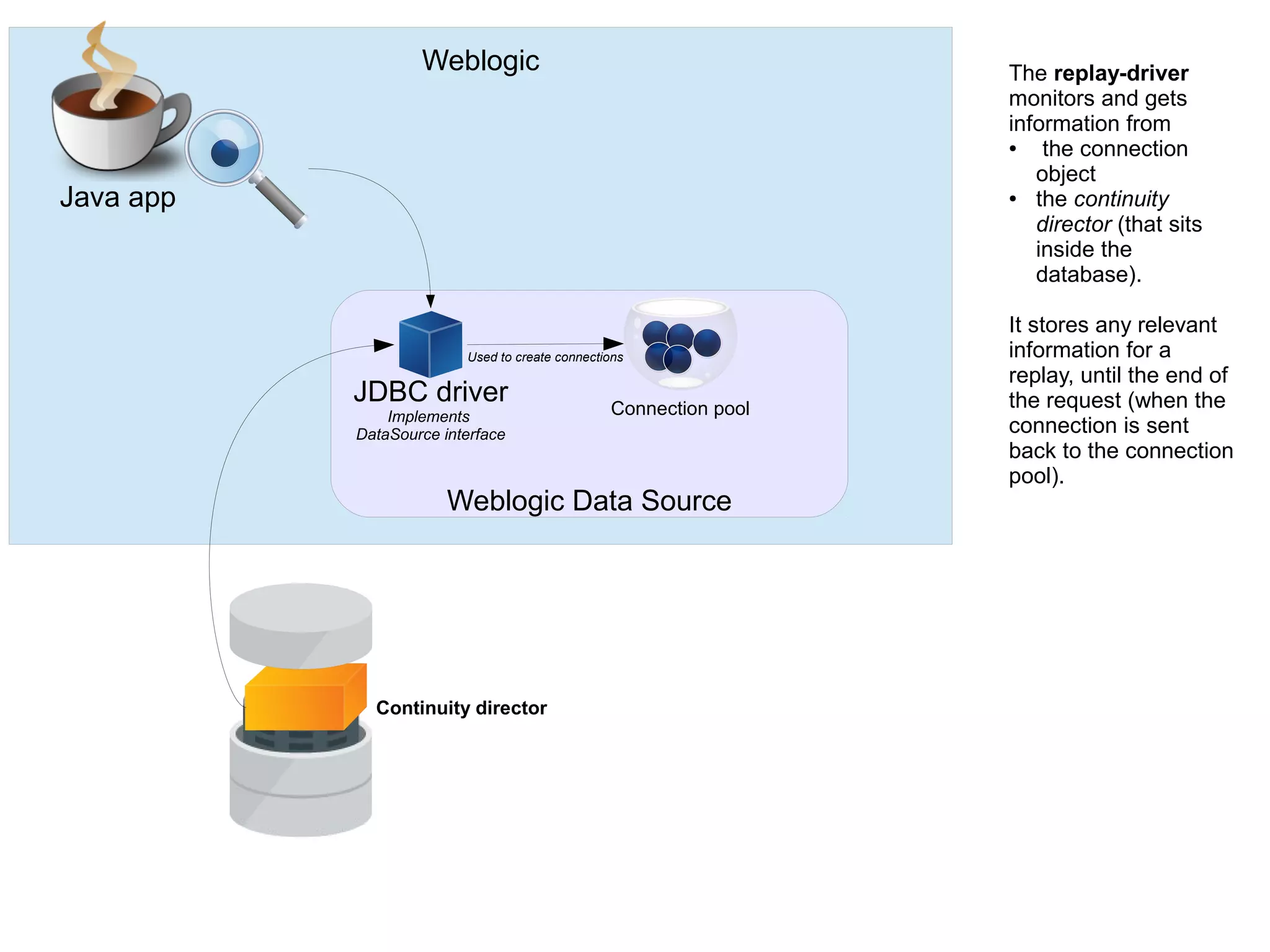
![Weblogic
Weblogic Data Source
Java app
JDBC driver
Implements
DataSource interface
Used to create connections
Connection pool
Specifically, the replay-
driver saves all the
PL/SQL statements
that the continuity
director has instructed
it to store. It saves
them into the replay-
context.
For each call made to
the DB, the replay
driver retains the
context required for a
subsequent replay. [1]
Replay
context
PL/SQL
statements
Continuity director](https://image.slidesharecdn.com/3notesleoforsharing-applicationcontitnuity-copy-180109155221/75/Application-Continuity-with-Oracle-DB-12c-25-2048.jpg)
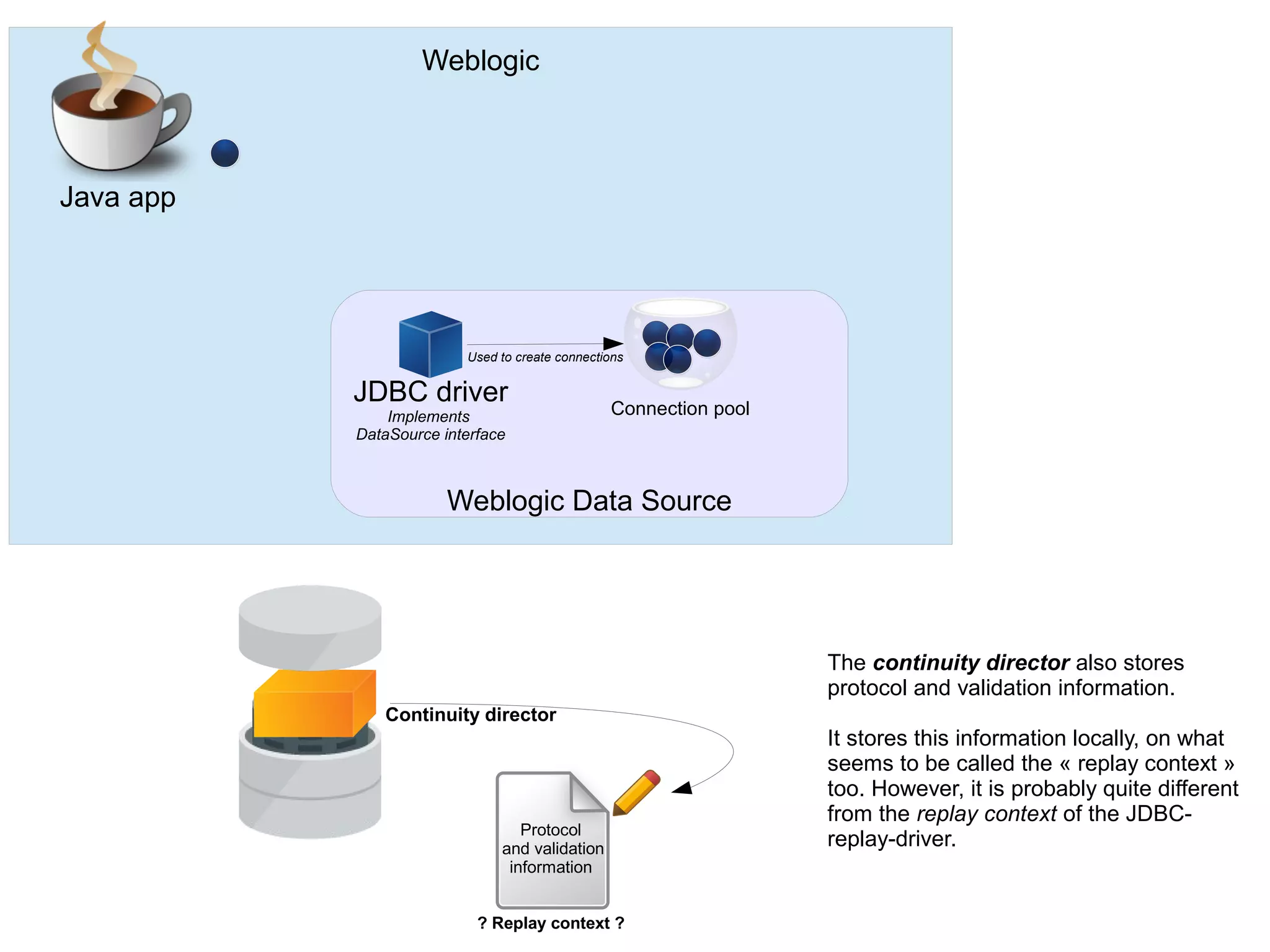
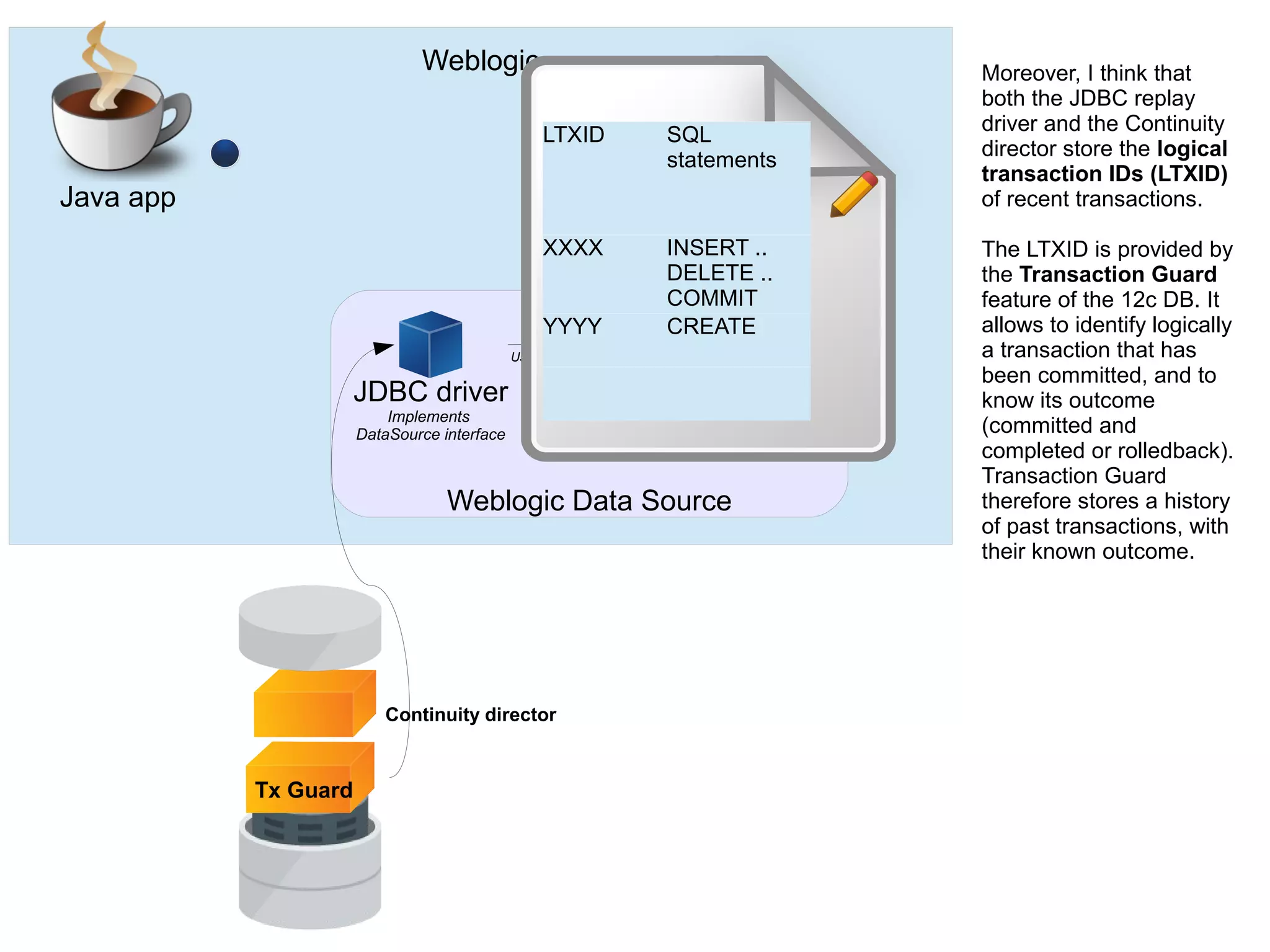
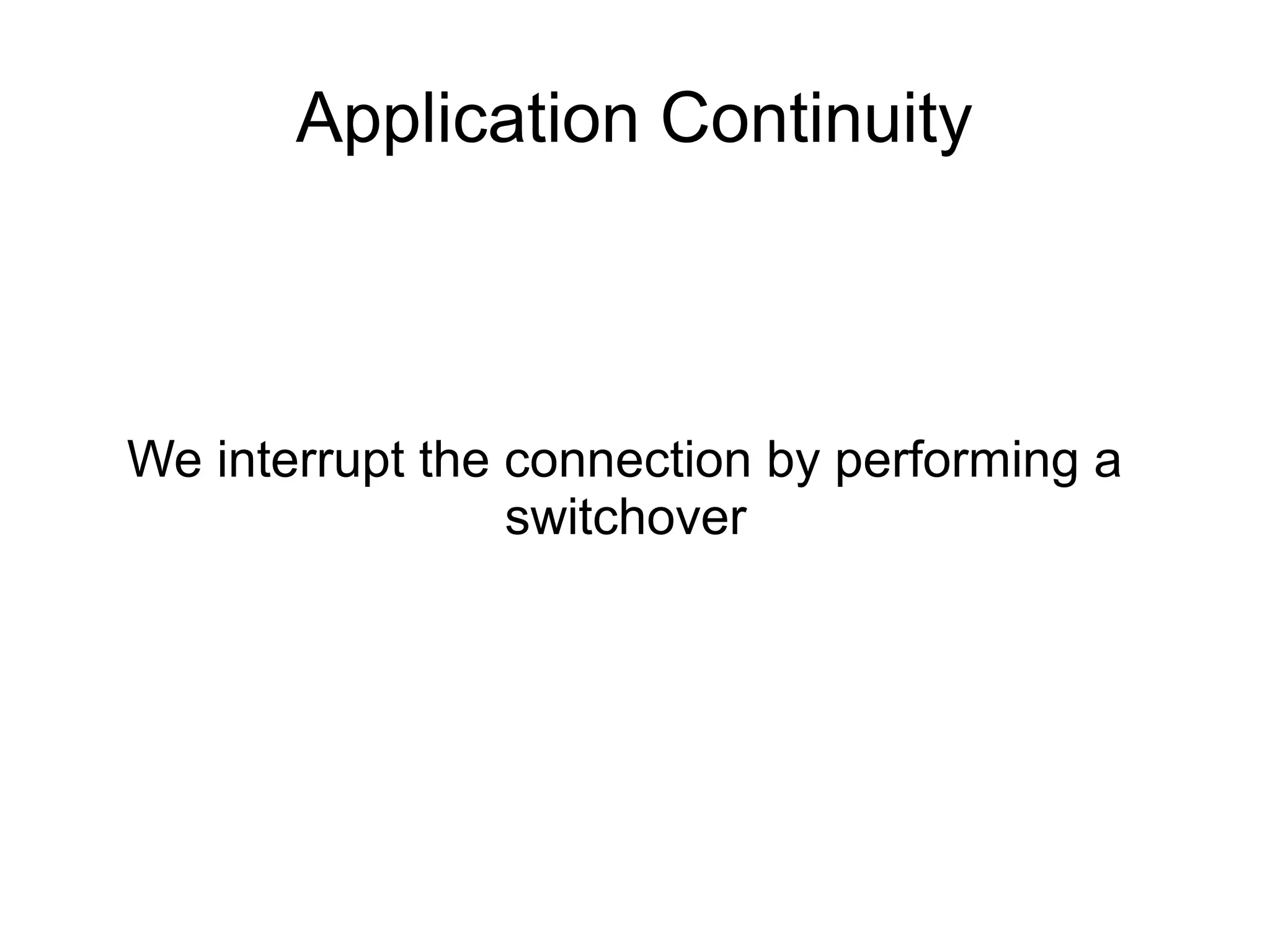
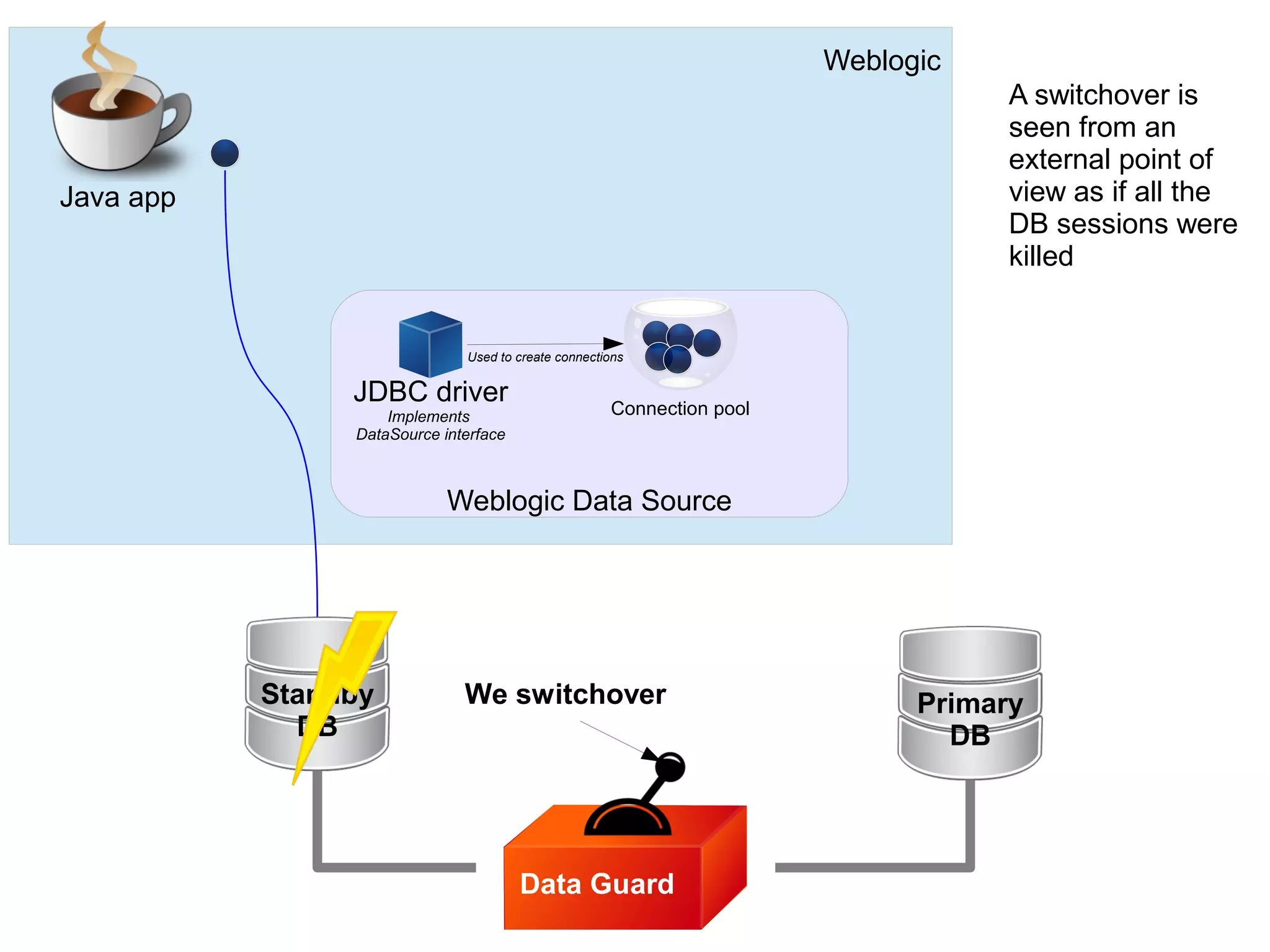
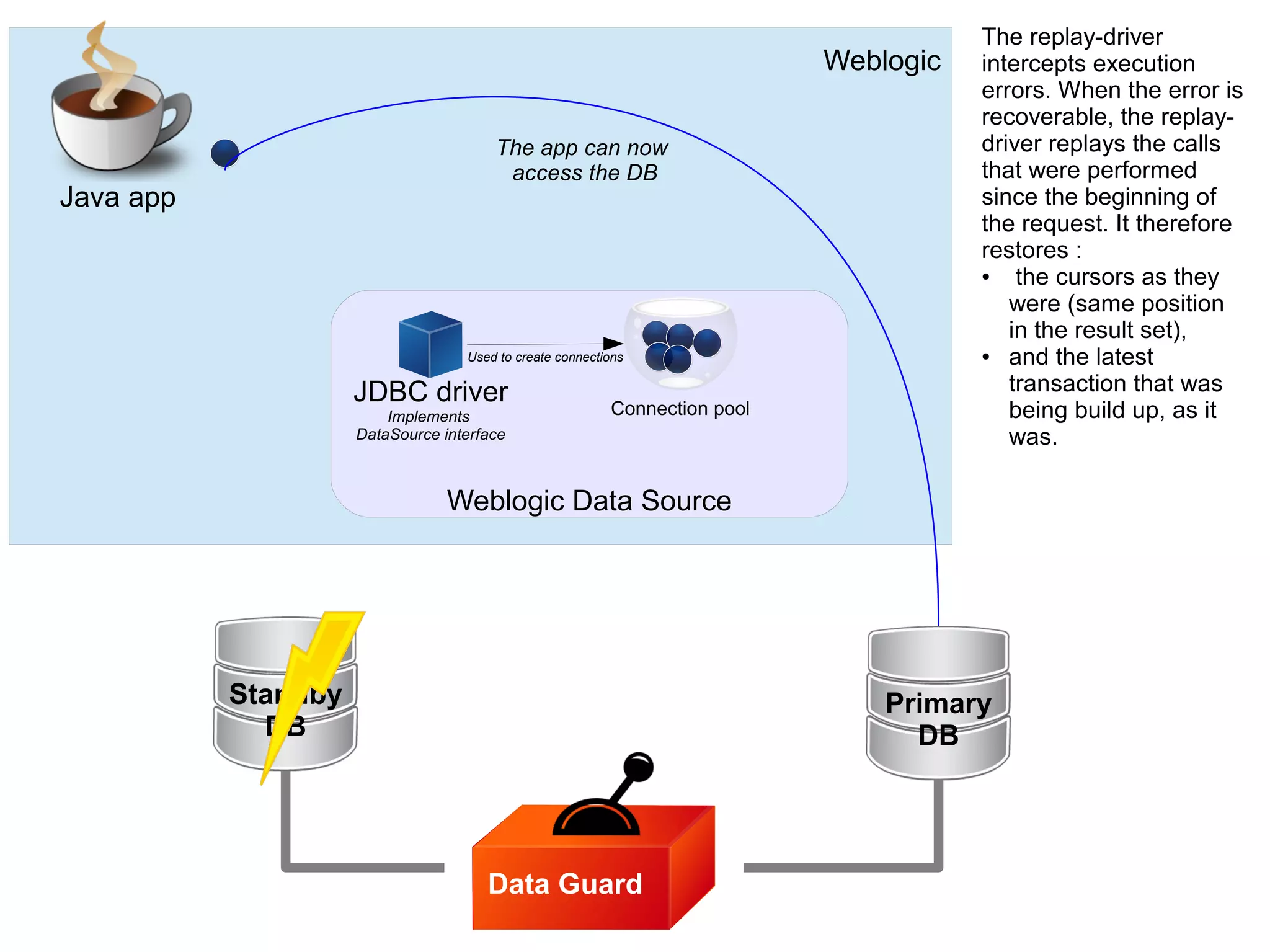
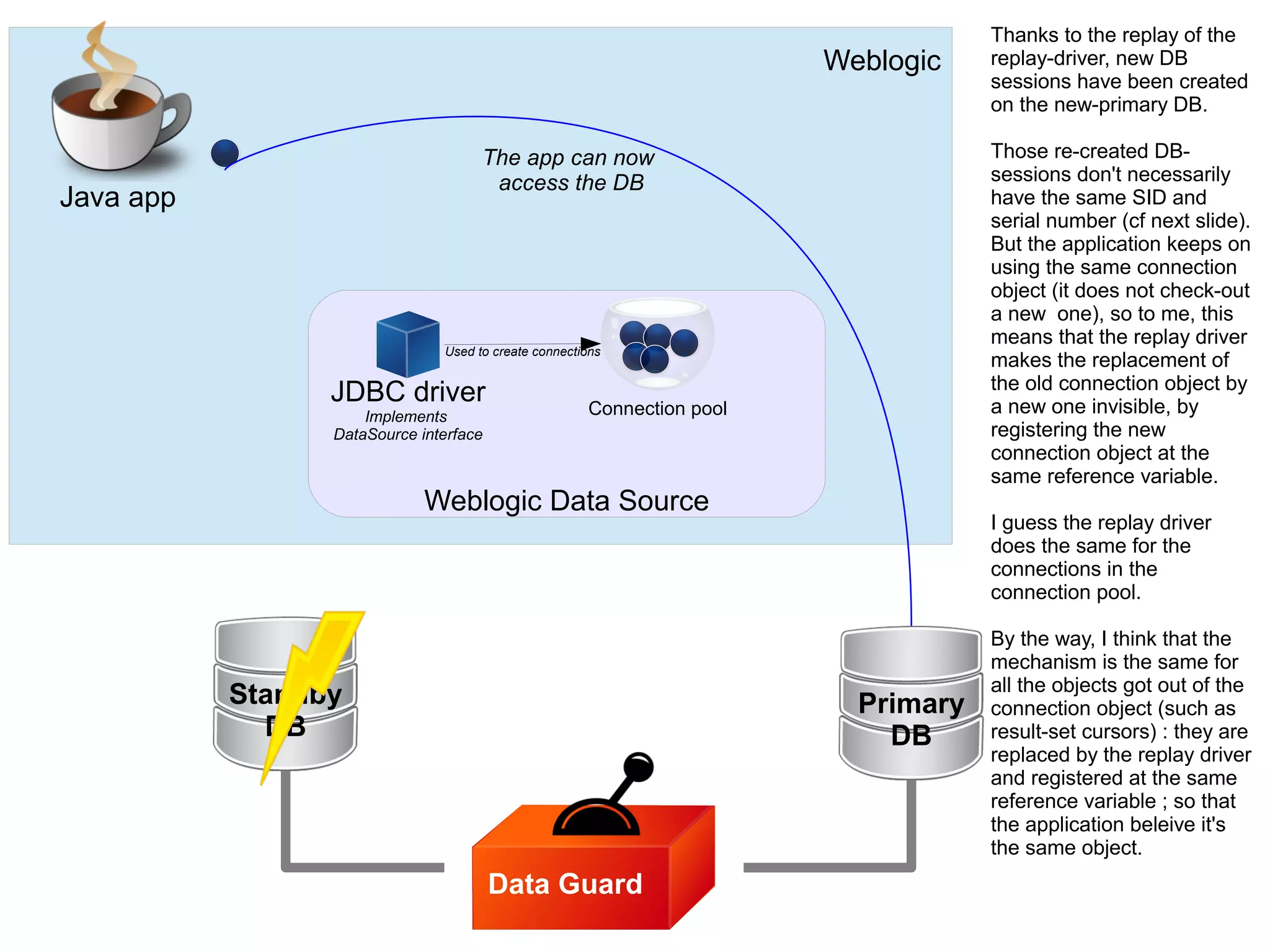
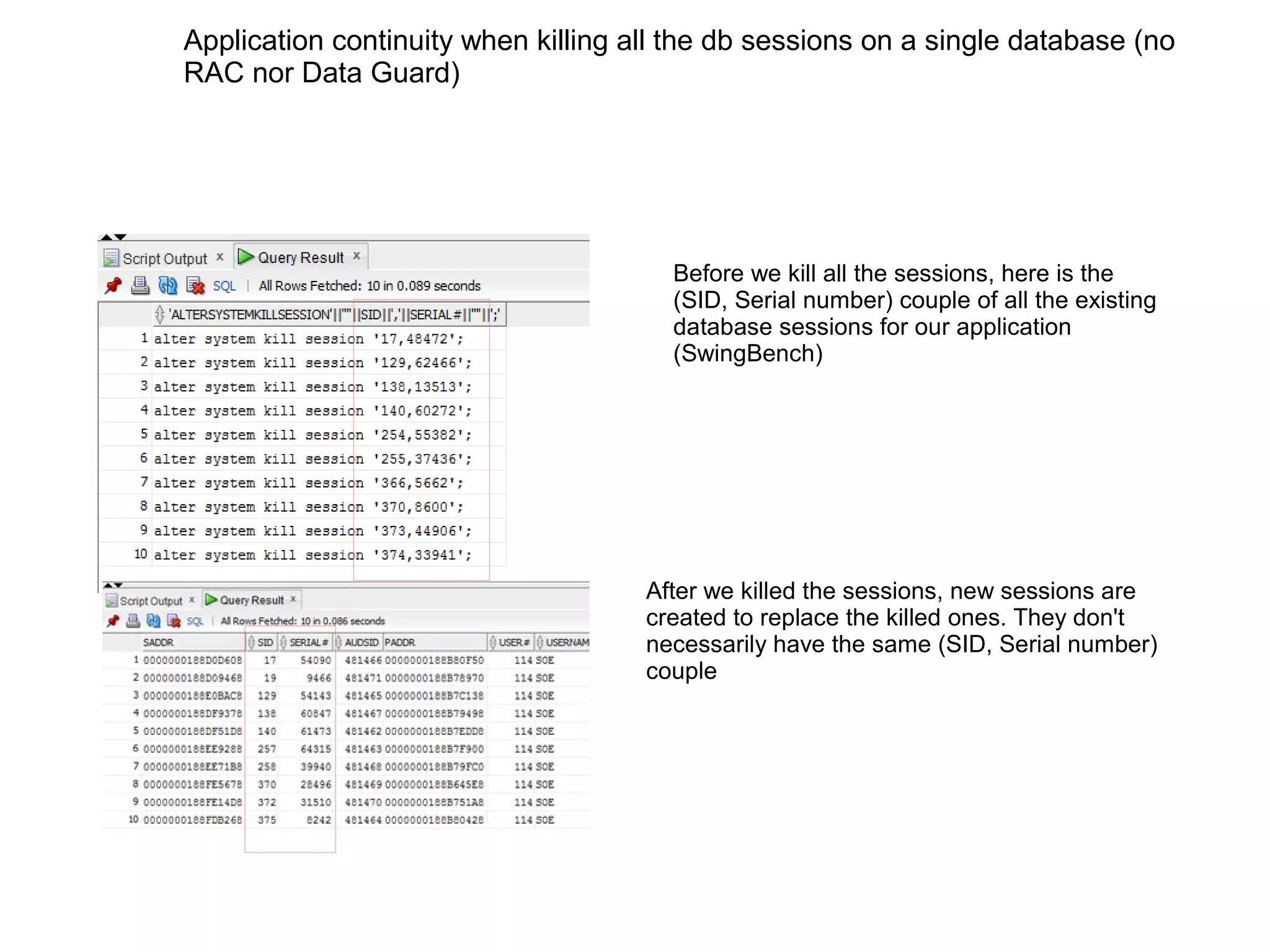
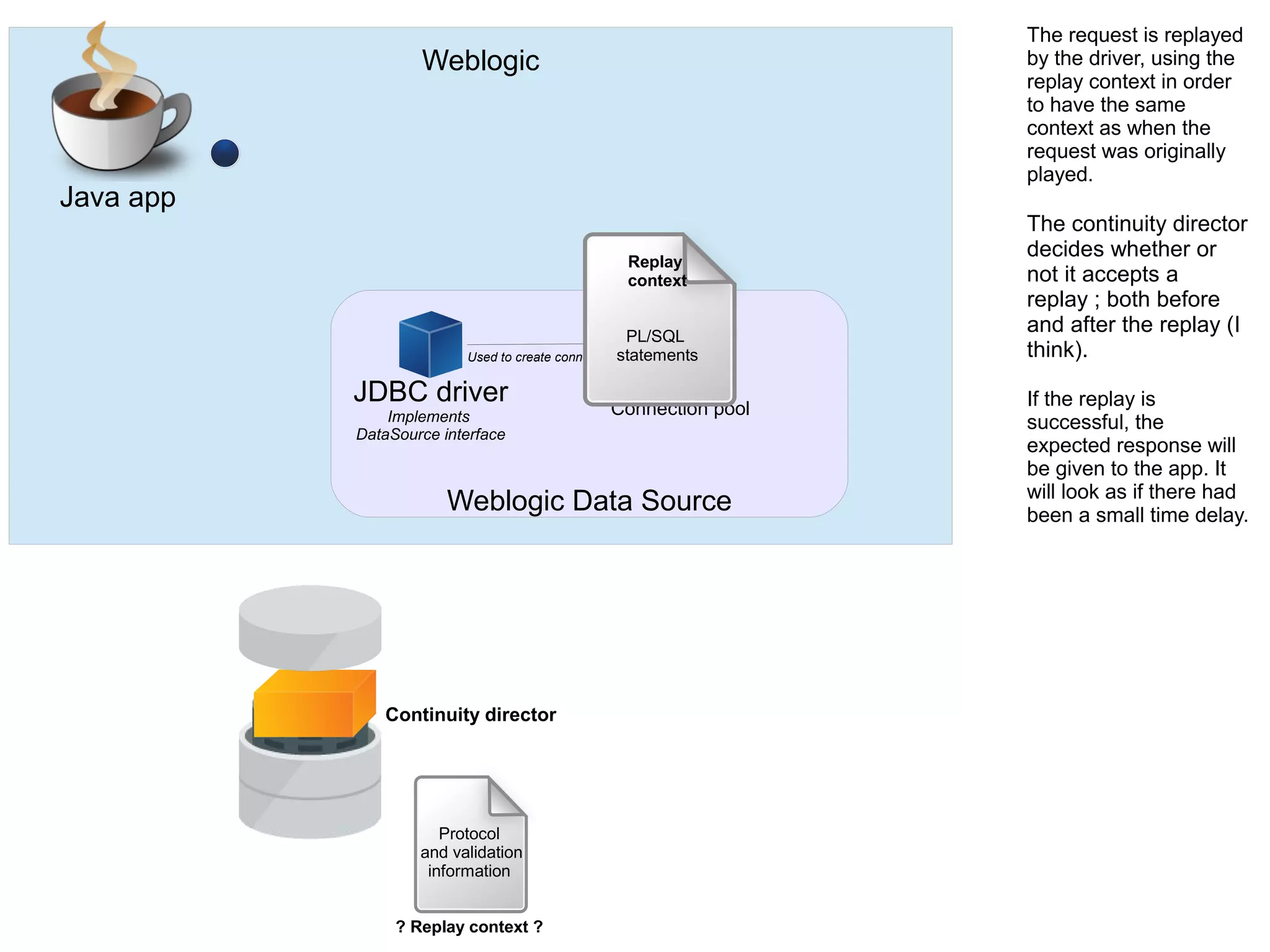
![Tx Guard
Weblogic
Weblogic Data Source
Java app
JDBC driver
Implements
DataSource interface
Used to create connections
Connection pool
Continuity director
LTXID SQL
statements
XXXX INSERT ..
DELETE ..
COMMIT
YYYY CREATE
« Has transaction XXXX been successfully committed ? »
[About transactions] In
order to replay the most
recent transaction that was
asserted during the request,
the replay-driver asks
Transaction Guard if the
transaction has been
successfully committed,
using its logical transaction
ID.
If it was not, the replay driver
can replay the transaction.
This process prevents from
committing two times the
same transaction, and thus
result with data
inconsistency.](https://image.slidesharecdn.com/3notesleoforsharing-applicationcontitnuity-copy-180109155221/75/Application-Continuity-with-Oracle-DB-12c-34-2048.jpg)
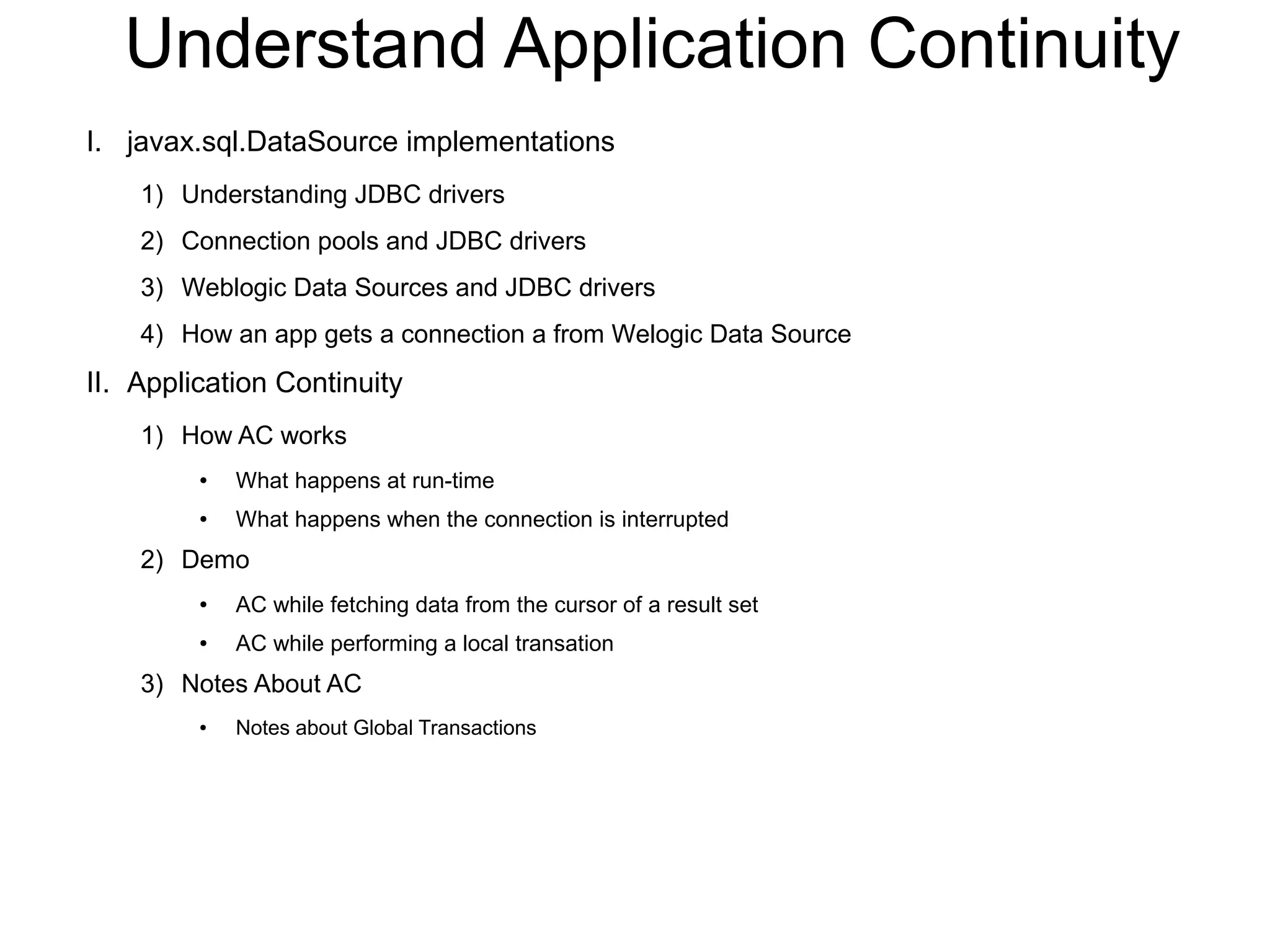
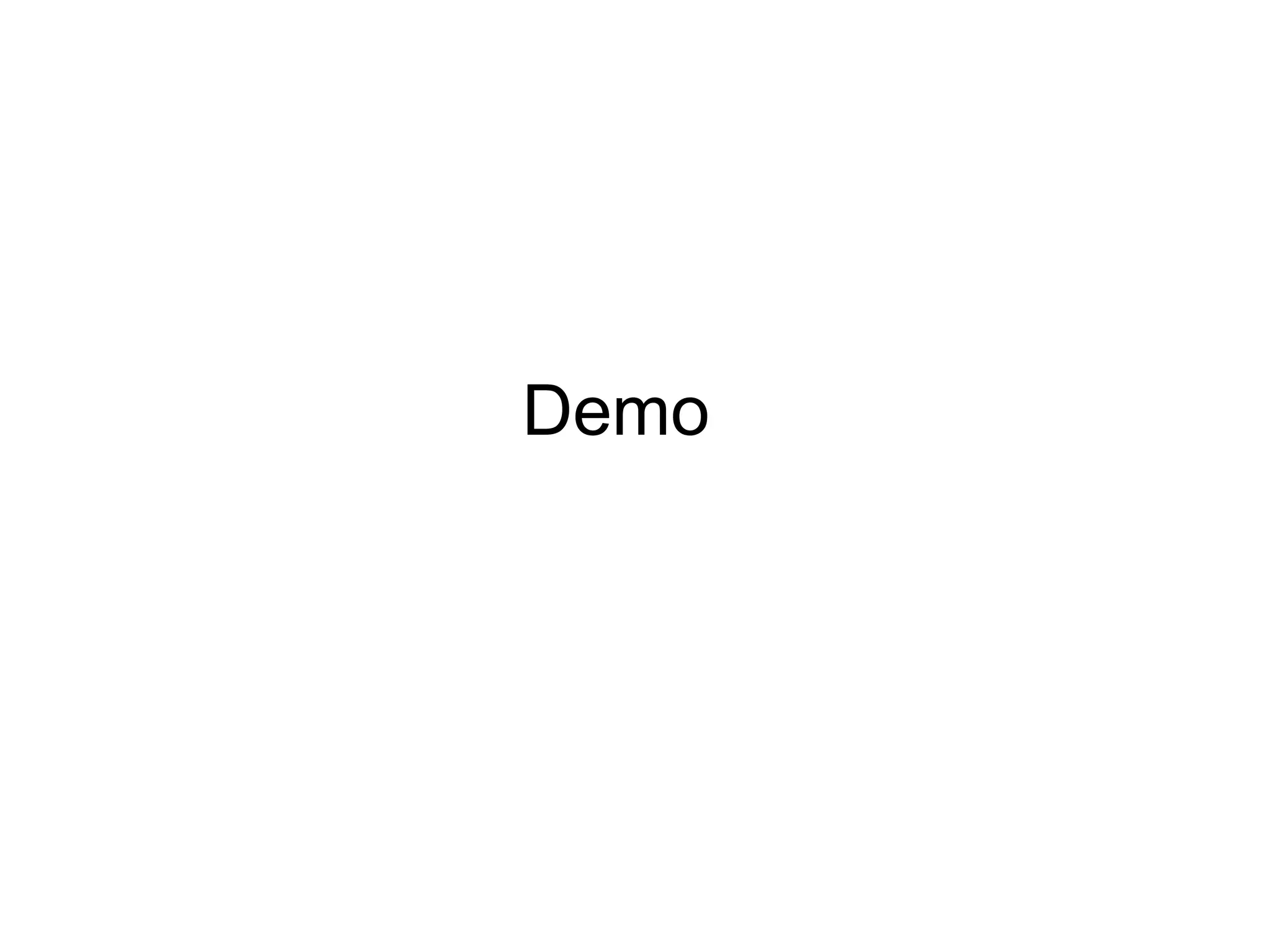
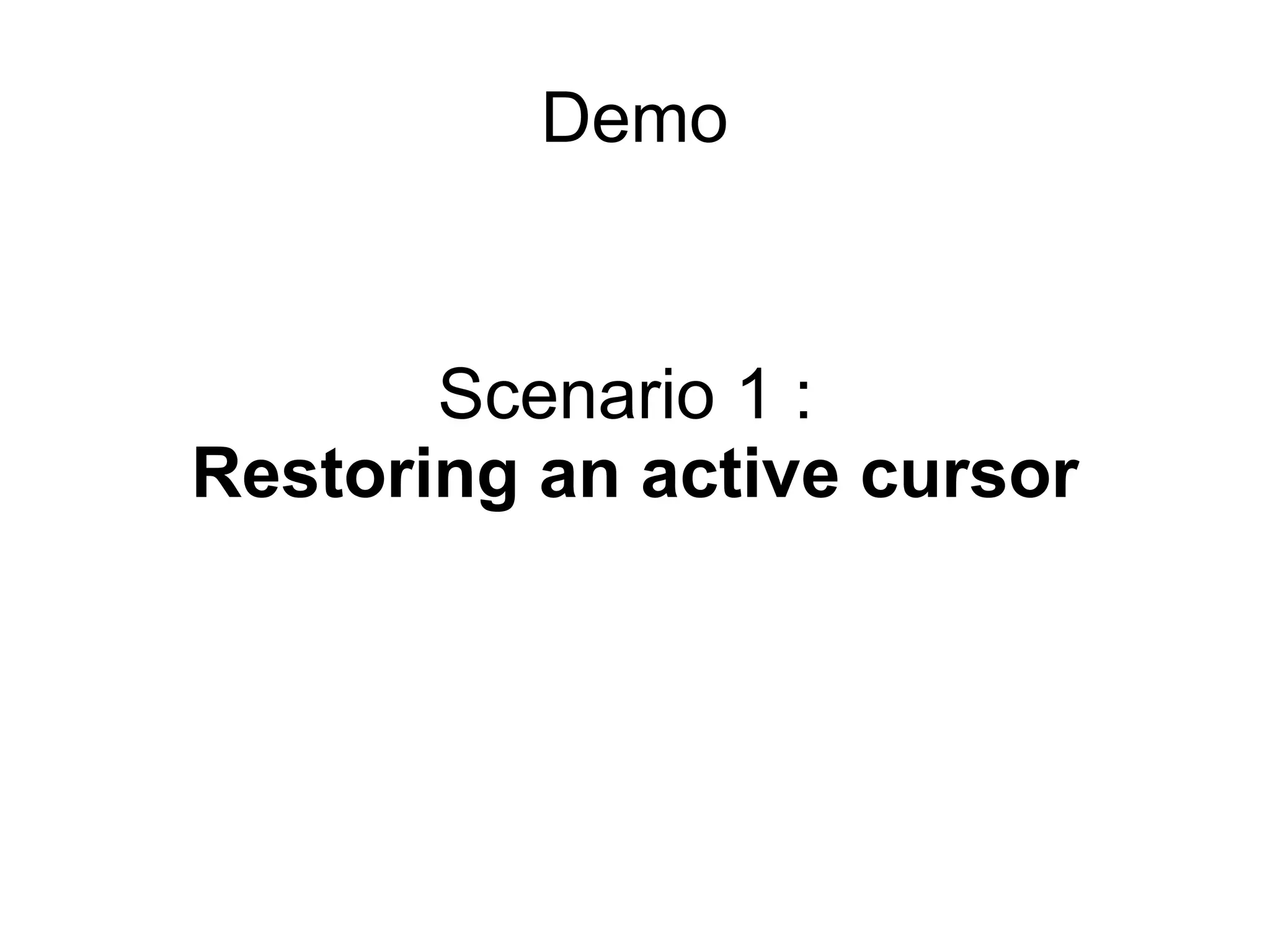
![$response = $db->query('SELECT * FROM video_games');
while ($rowData = $response->fetch())
{
echo $rowData['name'];
}
$response->closeCursor();
We switchover during the
execution of the loop
Although AC is only for Java applications, to help you understand what a
cursor does, here is how to use a cursor in PHP :](https://image.slidesharecdn.com/3notesleoforsharing-applicationcontitnuity-copy-180109155221/75/Application-Continuity-with-Oracle-DB-12c-38-2048.jpg)
